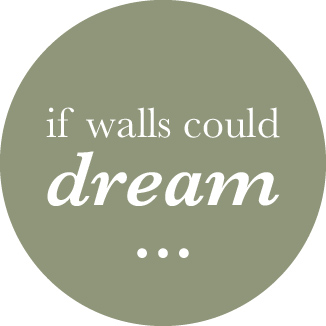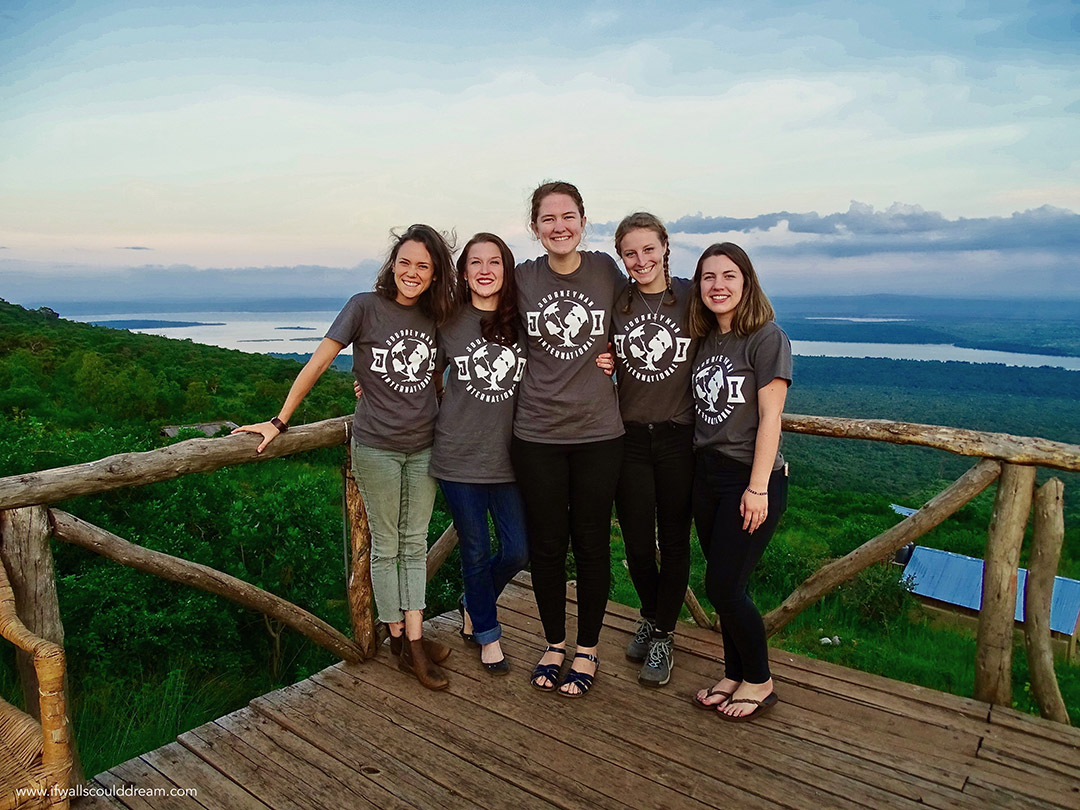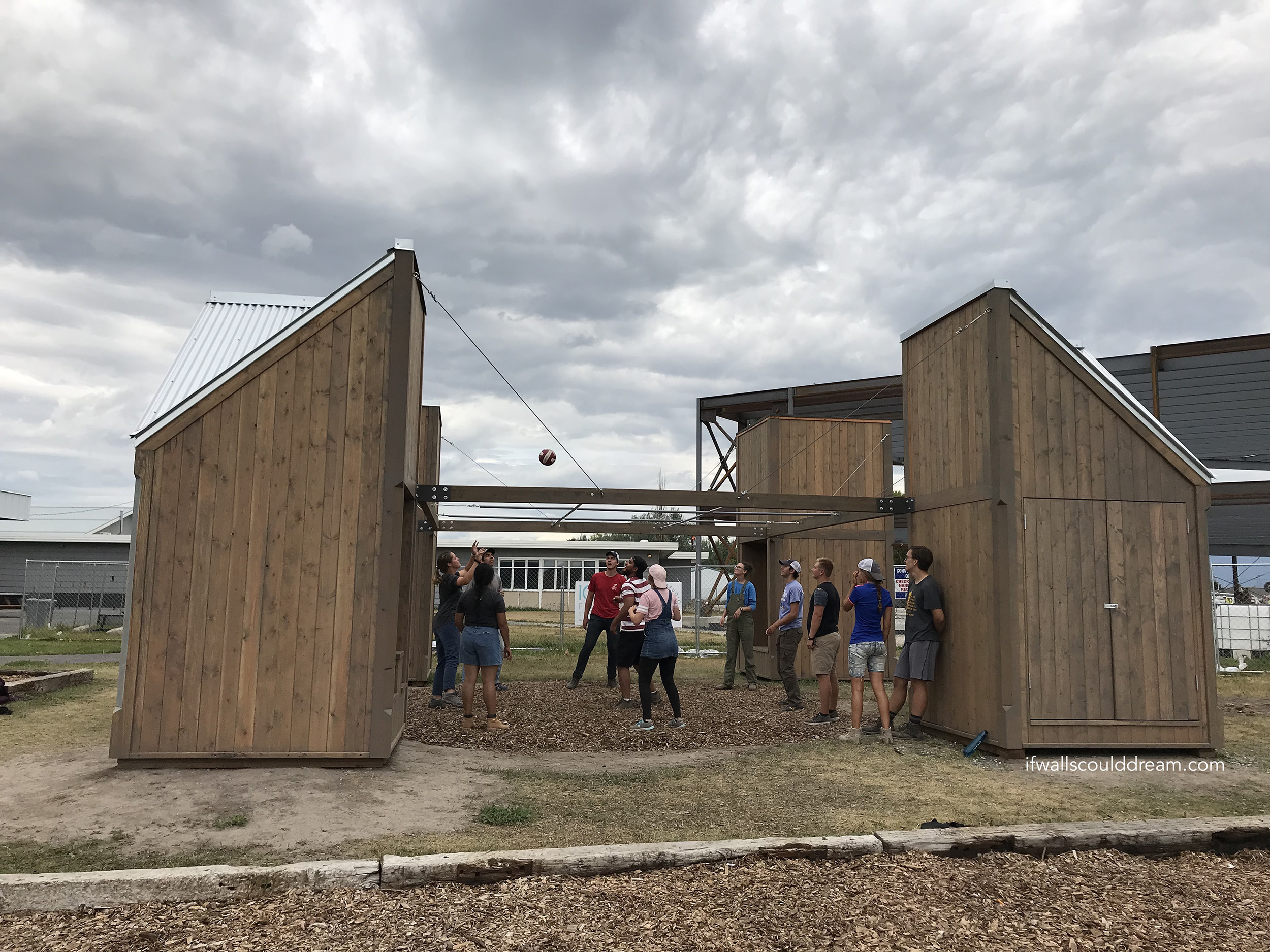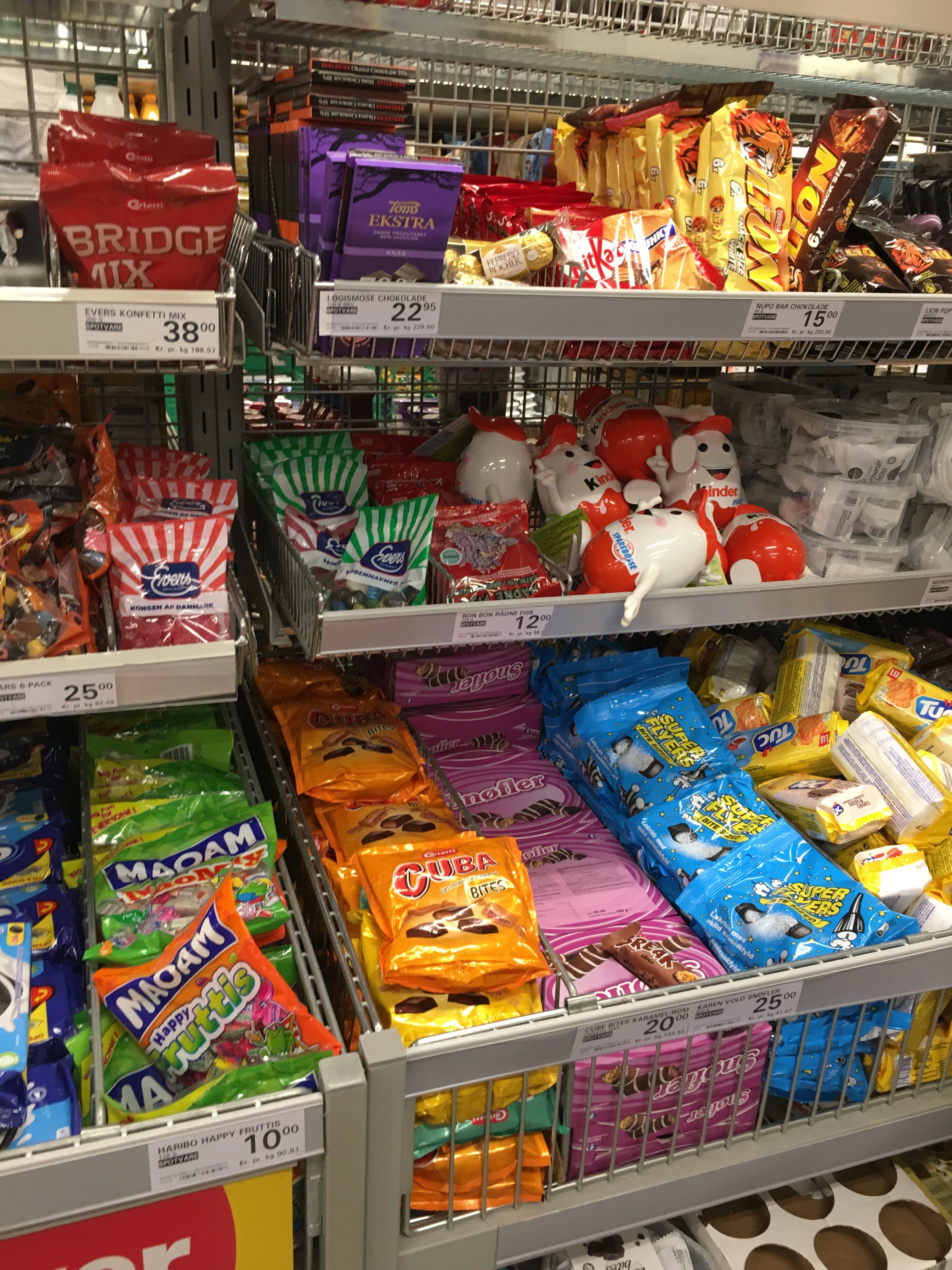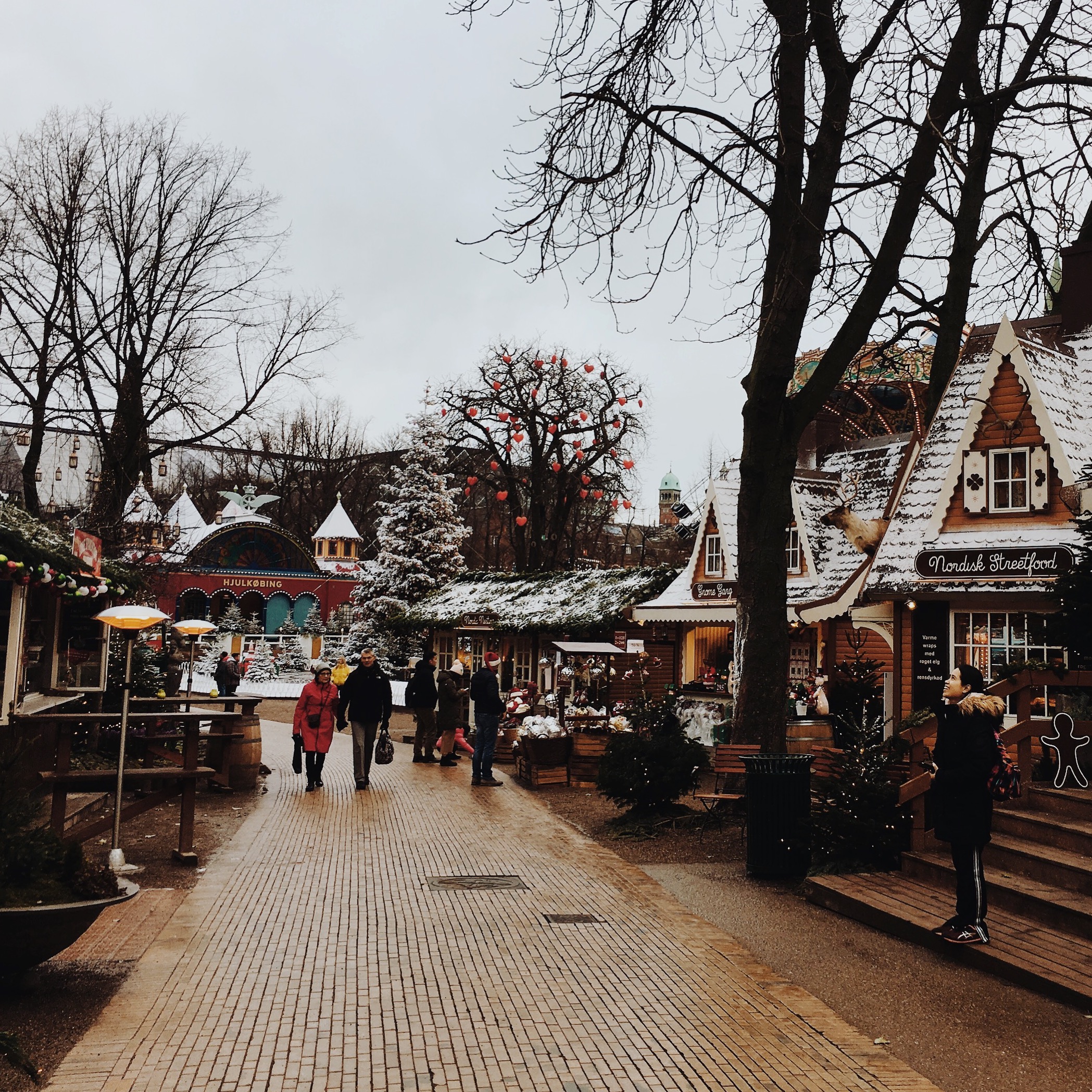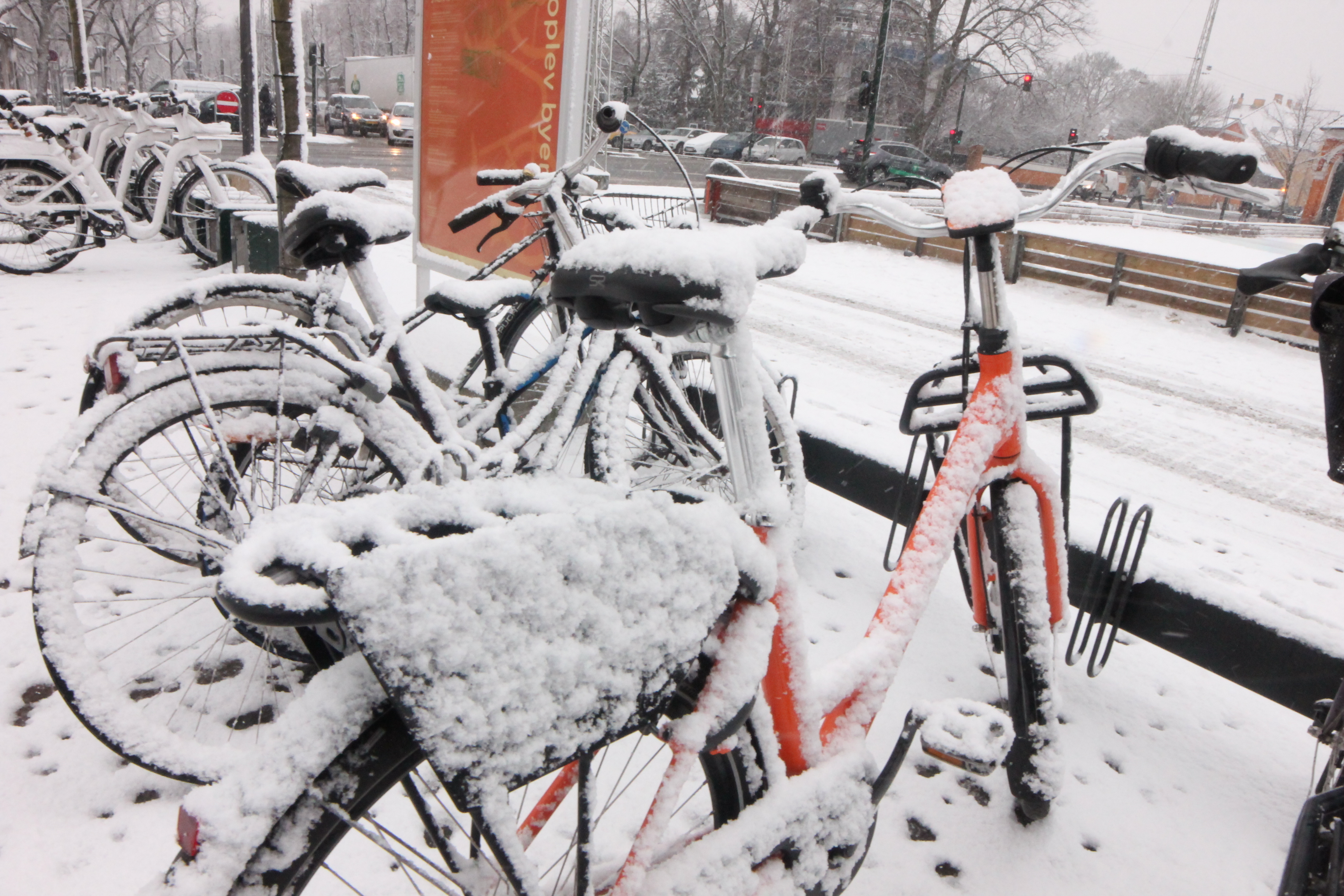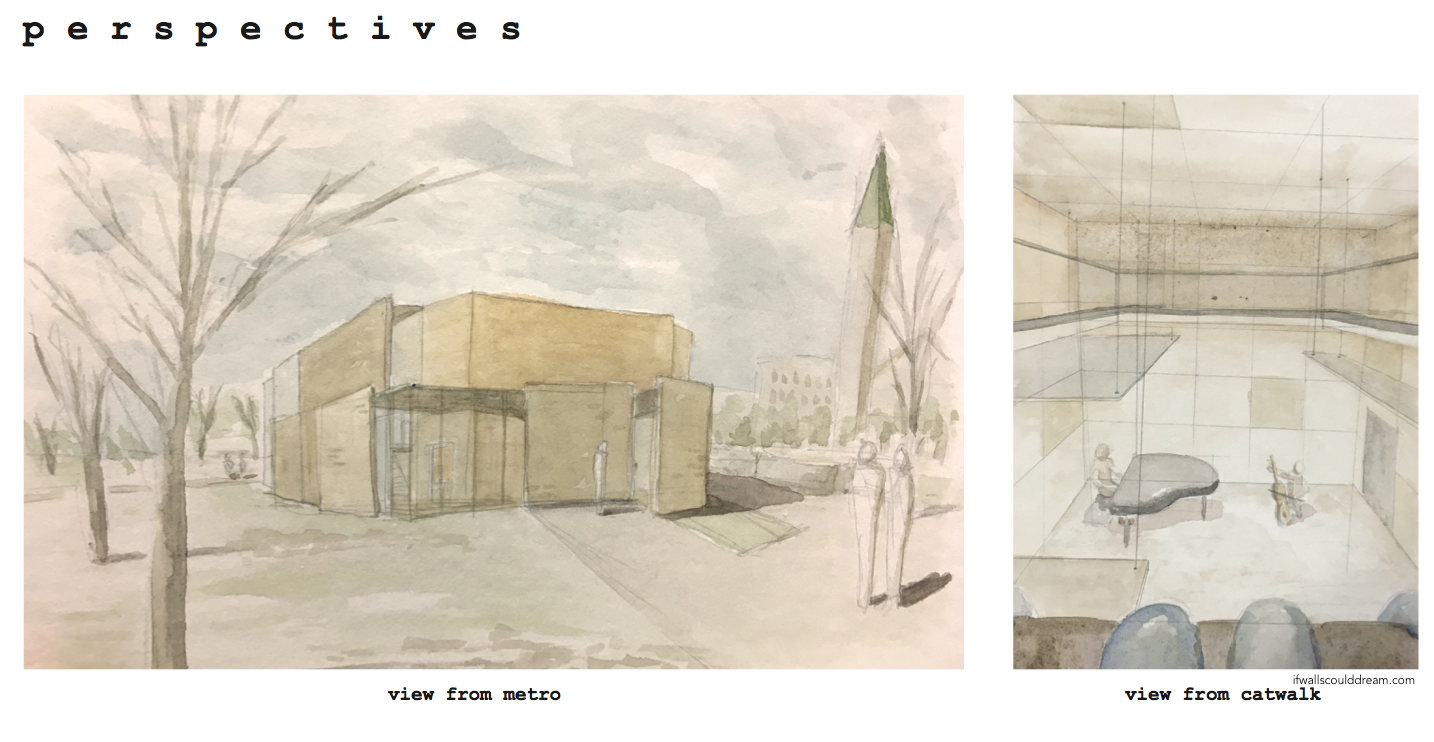Humanitarian Thesis Trip to Rwanda
I am volunteering with Journeyman International (JI) to design a humanitarian agricultural training center for my thesis and I got to visit JI in Rwanda over winter break. Two other student volunteers from Cal Poly and one JI employee from San Luis Obispo went on the trip with me. It was a great experience to meet people I’m working with remotely, see projects that JI and has completed, and get a taste of African culture.
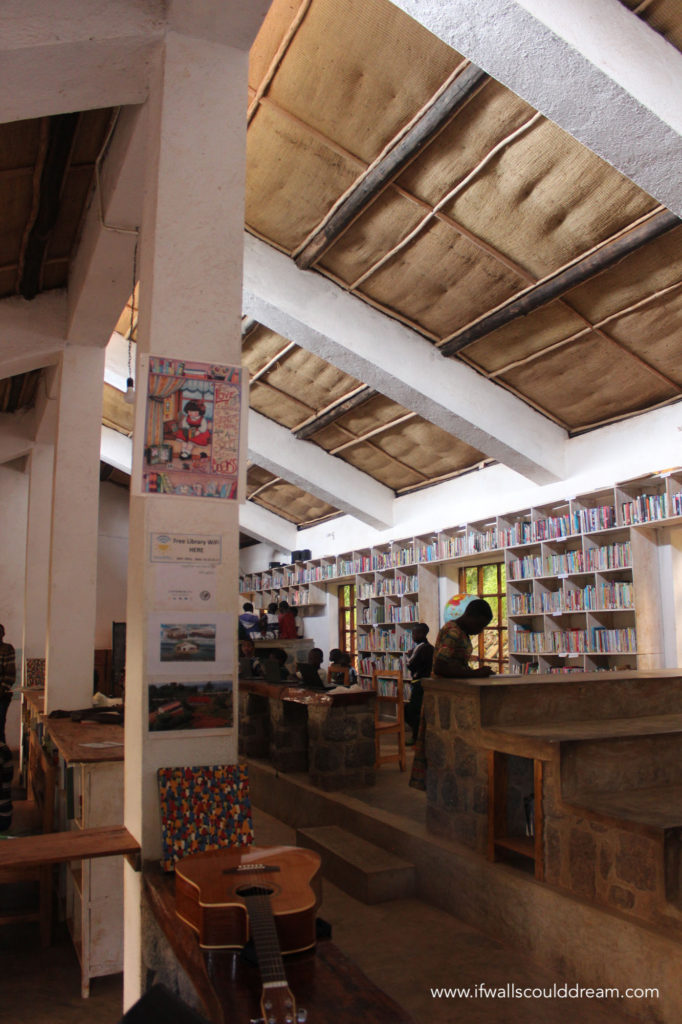
My favorite project we visited was the Sunzu library, pictured above, which Journeyman International finished a few years ago. The library has a lot of natural light from the clerestory windows and built-in benches for the kids to sit on and read or study. It was also inspiring how the building brought the community together and how proud they were of it. I hope that my thesis building will also help its local community come together and feel empowered by the design.
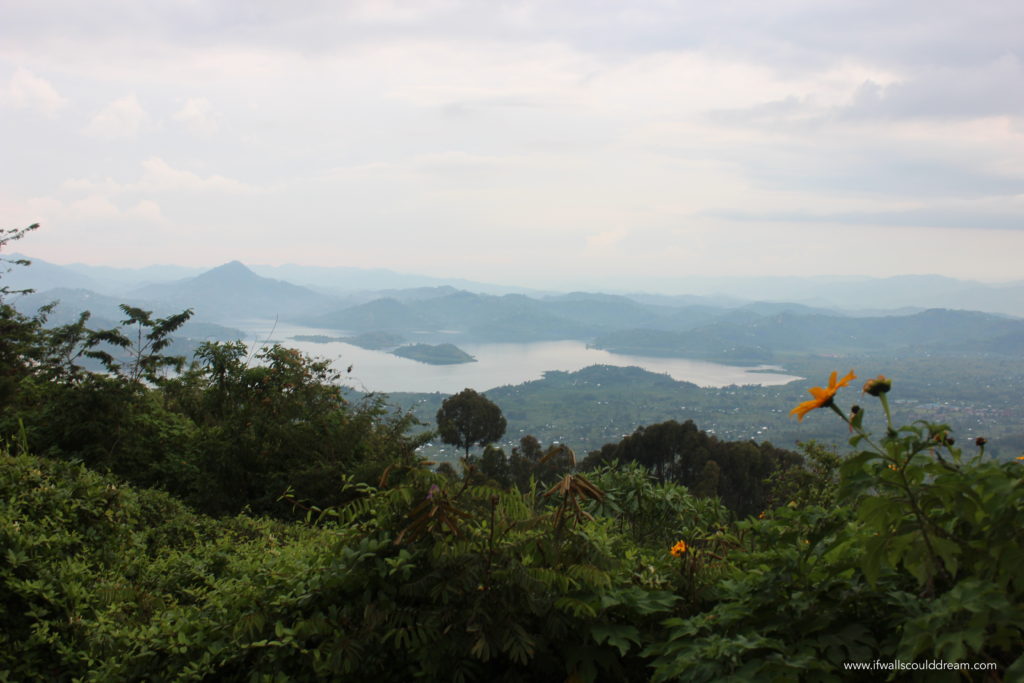
Even though we weren’t able to visit my site in Zimbabwe, this trip was so helpful for my thesis. I know that African cultures are very diverse and shouldn’t be generalized, but Zimbabwean culture is a lot closer to Rwandan culture than anything else I’ve experienced. This trip gave me a deeper understanding of their sense of time and their use of space and materials.
If walls could dream… they’d dream of empowering local communities through design!
100 Fold Summer Design-Build
I had the amazing opportunity to spend the summer in Lakeside, Montana learning from an incredible group of architects and working with a diverse team of architecture students to design and build a playground structure for a local middle school.
Mentorship and Teamwork
100 Fold Studio has such a big heart for mentorship and they empower and inspire the next generation of humanitarian architects through their example. Just spending a few months with them, I noticed right away that they do architecture differently. It’s not about ego. It’s about listening.
With a group of 24 architecture students from all across the US and abroad all trying to design this one playground, I though this project was going to be a train wreck! Thankfully, it was the exact opposite! With 100 Fold’s model of cooperation over competition as an example and with a common goal of making our project the best we could for the kids who were going to use it, the design process went smoothly.
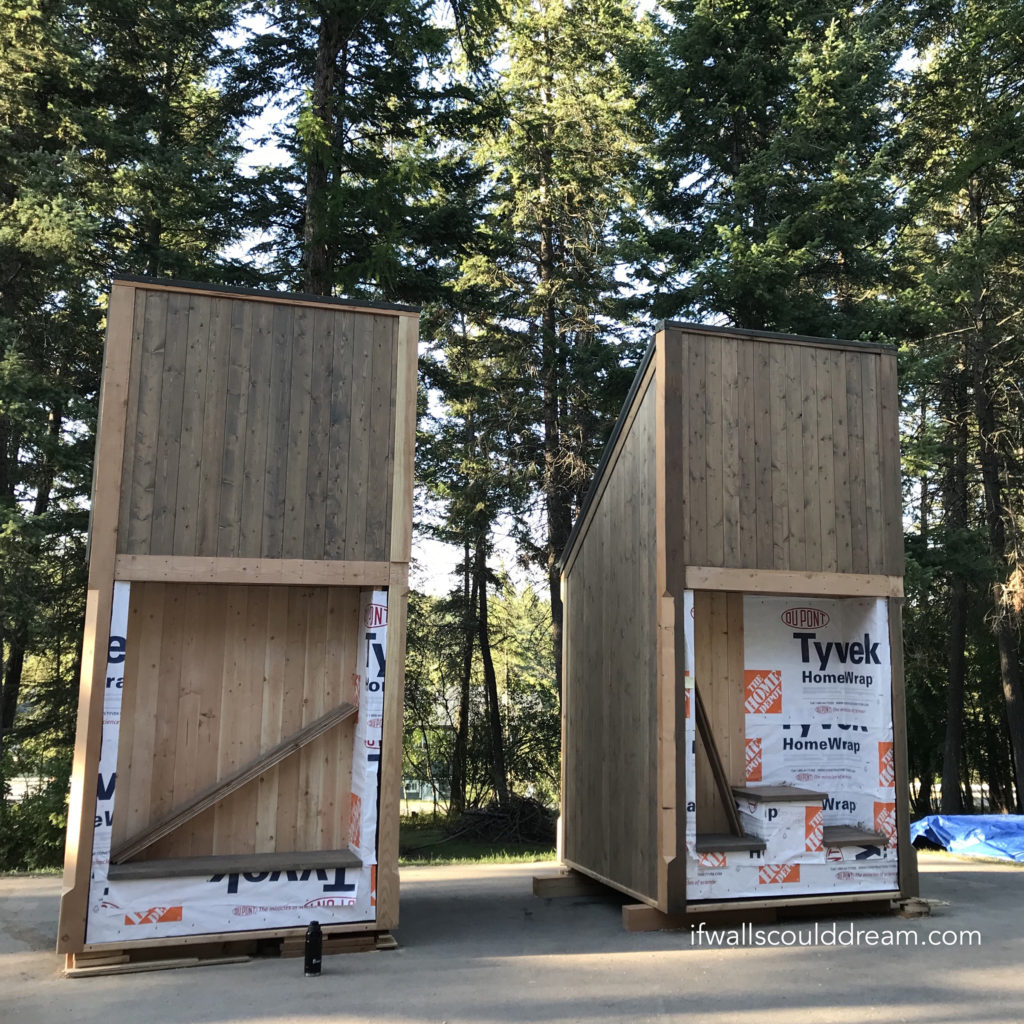
Our Design
The prompt was to build a structure that would be the catalyst and heart of a new playground for the local middle school, and that would store their outdoor games. When we met with the school principal, she emphasized that she wants the school to focus on the whole child, so we designed four sheds with the themes “intellectual, social, emotional, and physical” to represent different aspects of a child. Each shed has a bench area on the front with something that represents its theme. For example, social shed has a long bench and the intellectual shed has a table with a chess board. In the middle of the four sheds is a fun new game the kids love called Nine Square in the Air. Lastly, the structures frame the beautiful mountain views on rural the Montana campus and remind the students of the beautiful place they live in.
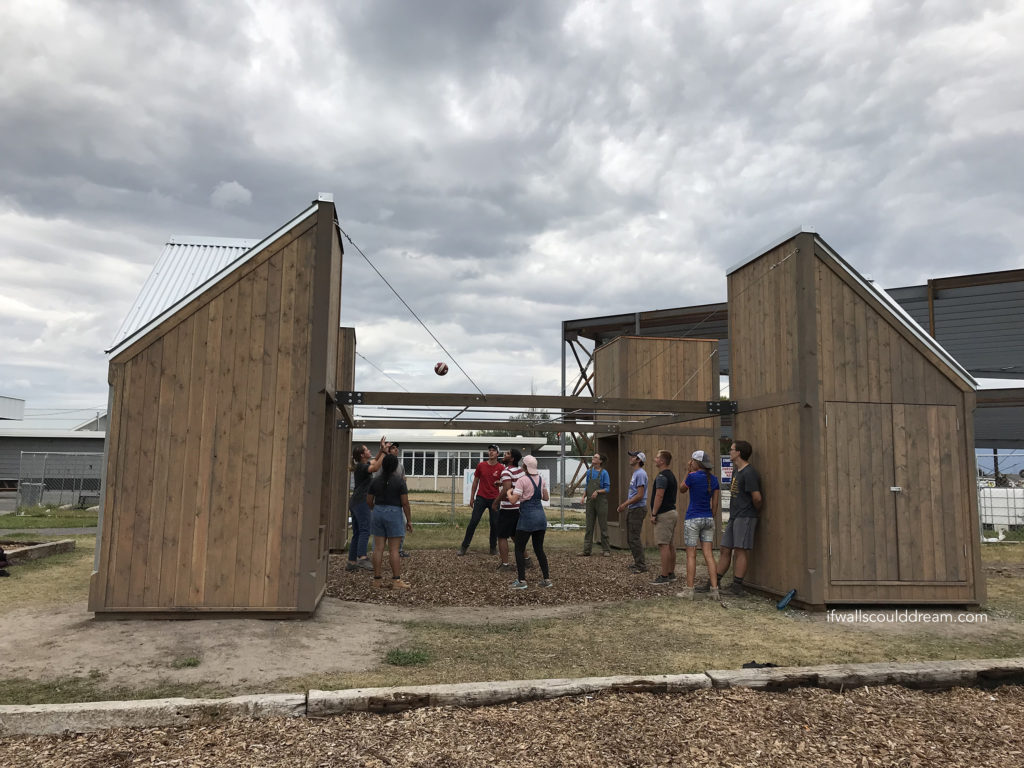
Build Week
After working together to design the project, we got to build it together too! Again, I though that 24 people (plus the staff who helped us!) building a structure was going to be a disaster but it actually worked out really well. We all learned new things but also learned how to shine in our strengths. We came together as a team and made lasting memories. We also learned that it’s REALLY HARD TO BUILD THINGS IN REAL LIFE! Everything takes longer than you’d imagine and it looks like you’re going so fast at first, but the finishing touches take so much patience! But we also learned that it’s SO WORTH THE WAIT. It was priceless to get to play in the finished structure and now to see photos of the kids enjoying it!

Beautiful Montana
It was such an amazing summer of growth, not only in my architectural and leadership skills, but personally. It was a great time of reflection in nature and a time to think about WHO I want to be as an architect.
I can’t recommend 100 Fold Studio enough. It’ll be a landmark in my path as an architect. A distinct wayfinding point in my career. A solid foundation.
Grocery Shopping in Copenhagen
Shopping for groceries abroad is always such an adventure. I think it’s fun to wander around the store, unsure what anything is called, and search for your food like a treasure hunt, but if you like checking off your list, grocery shopping in Copenhagen might be more of a challenge.
Being a college student, I shopped at the cheapest grocery stores possible. Luckily, there was a Netto just a few blocks from my apartment. Netto is the cheapest of cheap grocery stores and it’s always an adventure trying to find what you want, but you can also happen upon great bargains! When I wanted something specific, I would go to Fotex. My Danish roomate also told me about Kvickly, which is a bigger grocery store like a small Target that has clothes and household items too. That’s where I got my bike helmet and tupperware.
Here are some highlights of my time shopping in Denmark:
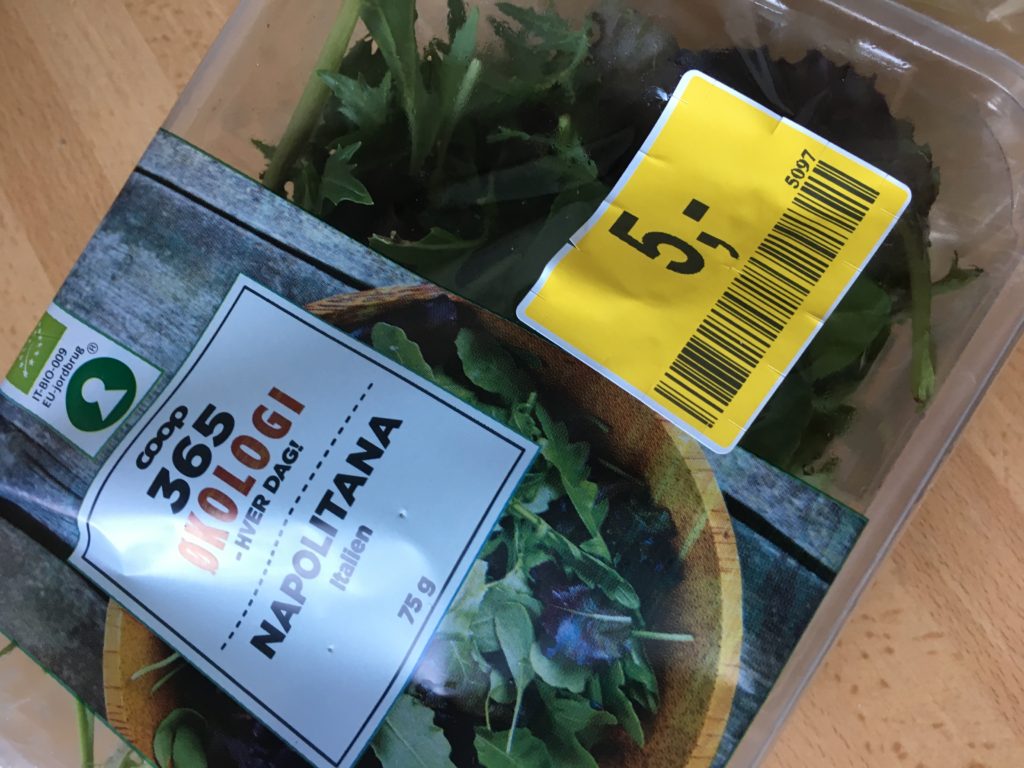
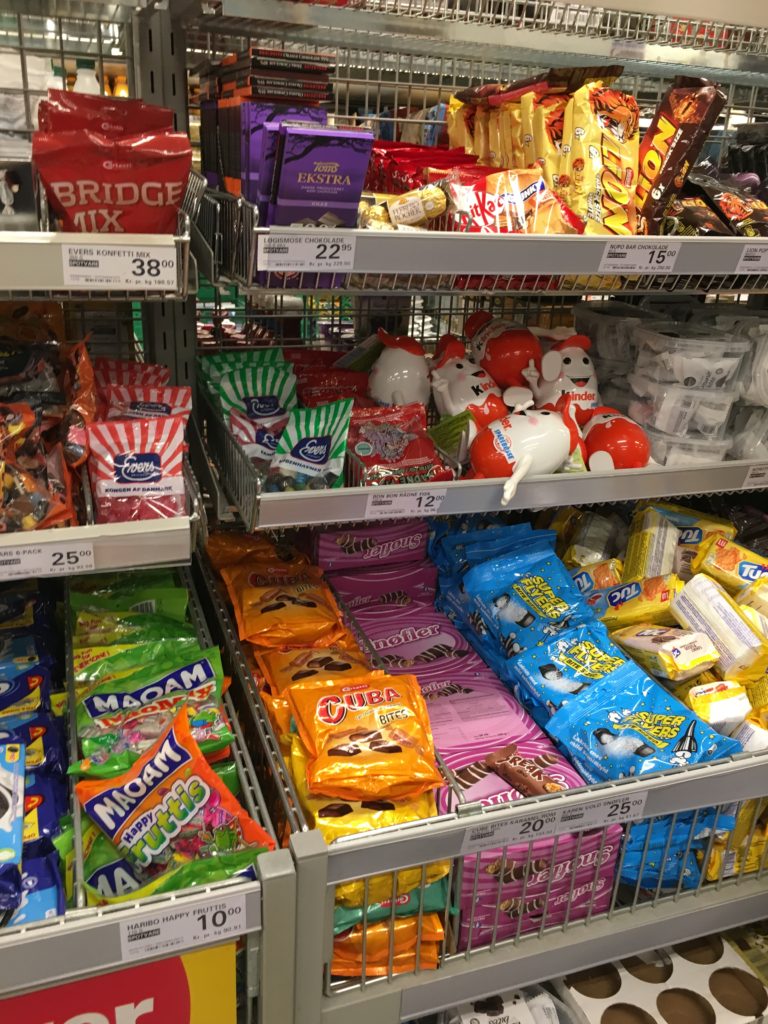
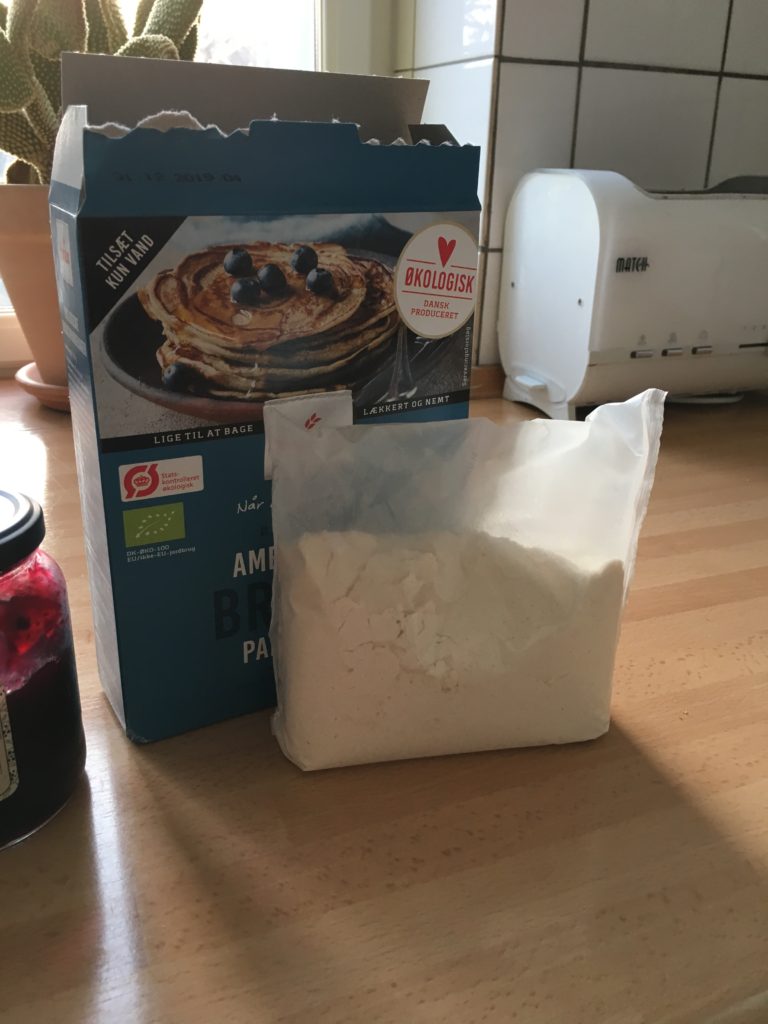
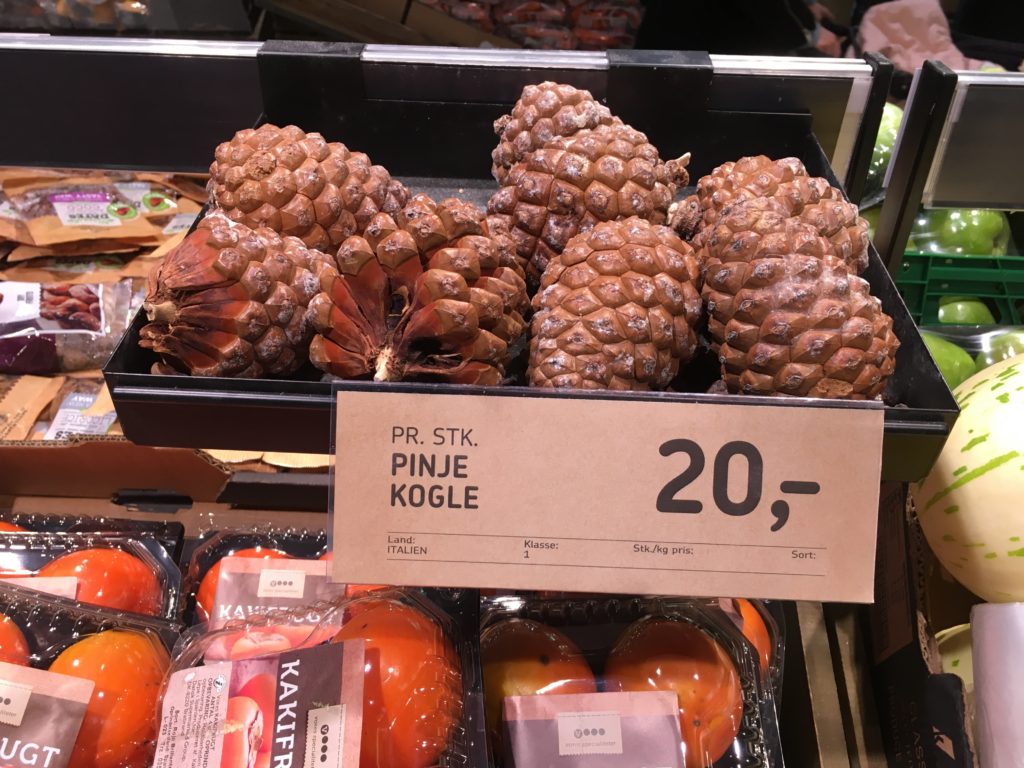
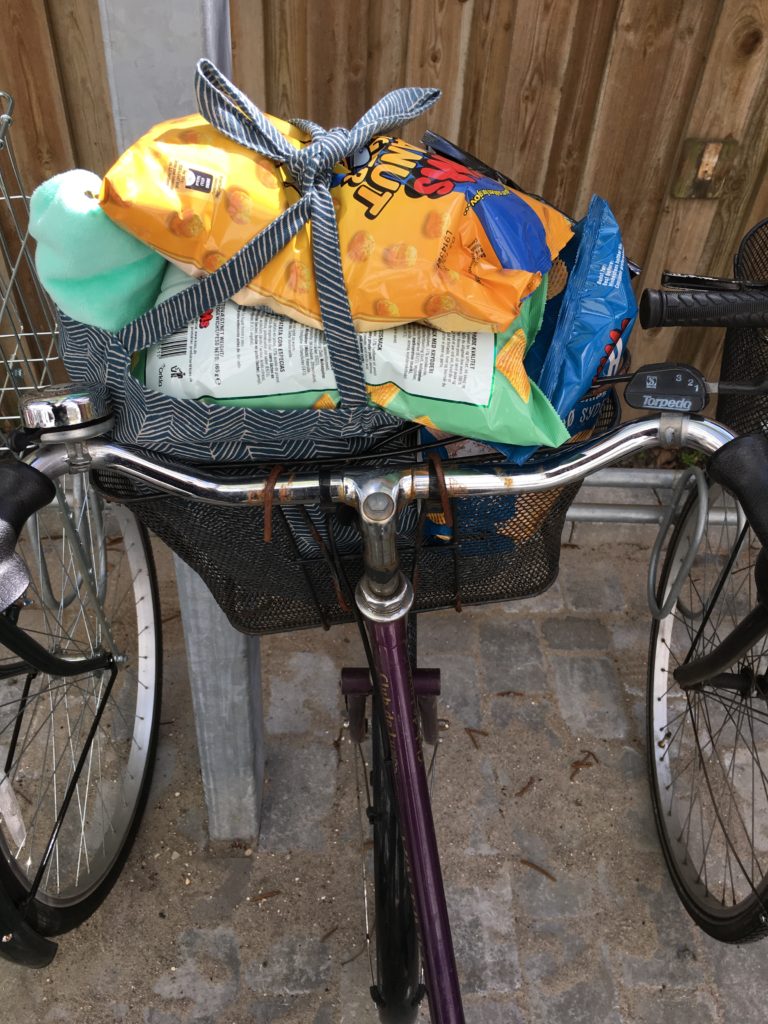
Foods I didn’t expect to miss…
Friends who had studied in Denmark before had said that I wouldn’t be able to find peanut butter here which I definitely can. When I was packing to come to Denmark, I wanted to get my host family some fun American foods but I didn’t know what they’d have here or not have. I’ve been surprised by a few foods that I would’ve expected them to have that they don’t:
- Bisquick (making pancakes from scratch is harder than I thought!)
- Root beer (my host sisters and I were eating jelly bellies the other day and they asked me what root beer was and if it was actually beer. I told them no it’s not beer, and I don’t know why it’s called beer, but I don’t know how to describe the flavor.)
- Banana bread (I wanted to make banana bread one day and my host family hadn’t heard of it! They were confused if it was a bread or a cake and I said it’s a little like both! They liked it though.)
- Tater tots (another thing I was surprised my host family hadn’t heard of! I bravely decided to make them from scratch one day and it was really hard and not as good as real tater tots.)
- Tofu (I guess this is kind of a weird vegetarian food but they had some tofu just not the kind I was used too, it was either too silky or too dry.)
- Refried beans and cheddar cheese (I don’t think I ever found refried beans so I just used black beans for burritos which is healthier I guess and they did have cheddar cheese but it was nothing compared to Tillamook!)
- And last but not least… ranch dressing! (They have creme fraiche but it’s just not the same!)
All in all, I survived and I actually ate really well and enjoyed being more adventurous with what I ate and trying new things. My roommates and I second semester were all vegetarians so we shared recipes and roasted a lot of veggies.
If walls could dream… they’d dream of grocery shopping abroad!
Tivoli
Tivoli is the amusement park in the center of Copenhagen. Yes, you read that right, there’s an amusement park in the center of Copenhagen! Right next to the central train station, Tivoli is a festive little park for all ages. There are rides as well as restaurants, shows, and cute seasonal decorations. In the winter, they have ice skating and in the summer, they have outdoor concerts! It’s a great place to go with friends.
If you’re in Copenhagen for an extended period of time, you should check out the monthly pass. You have to sign up for at least six months but it pays for itself in three trips.
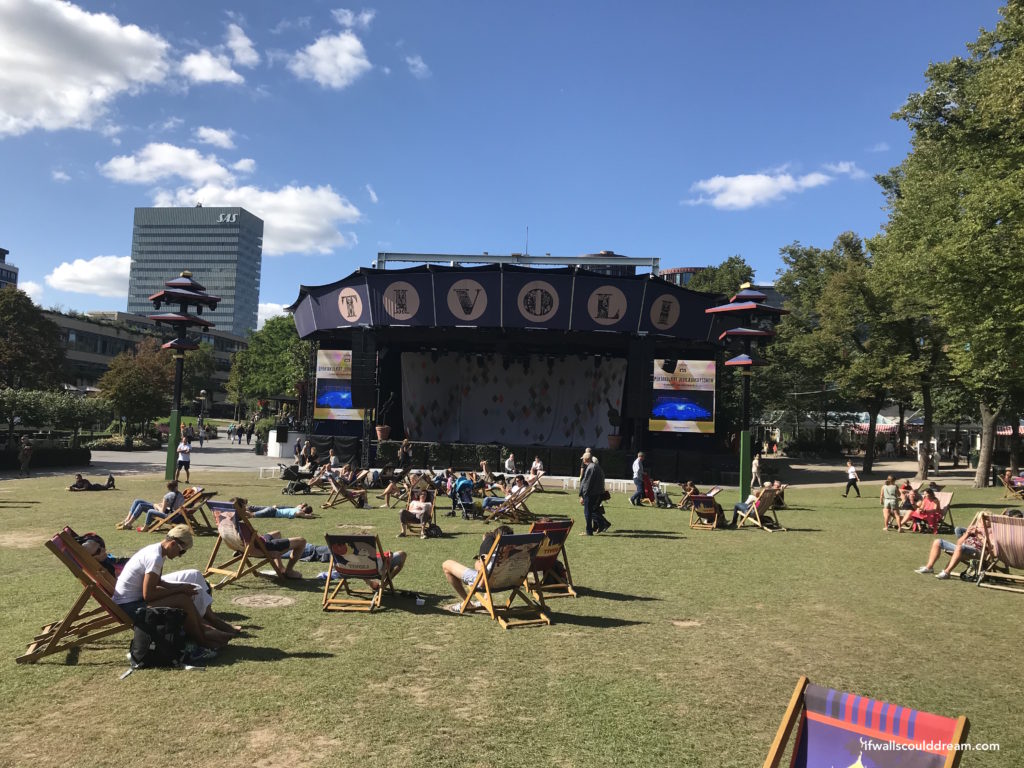
Summer 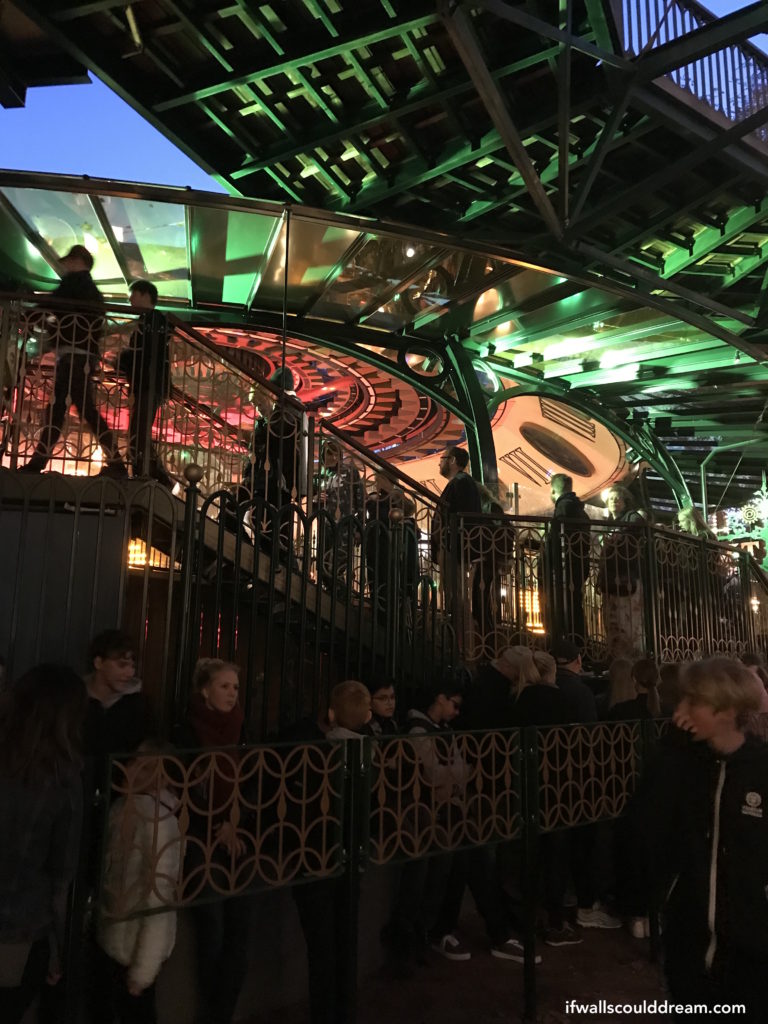
Rides 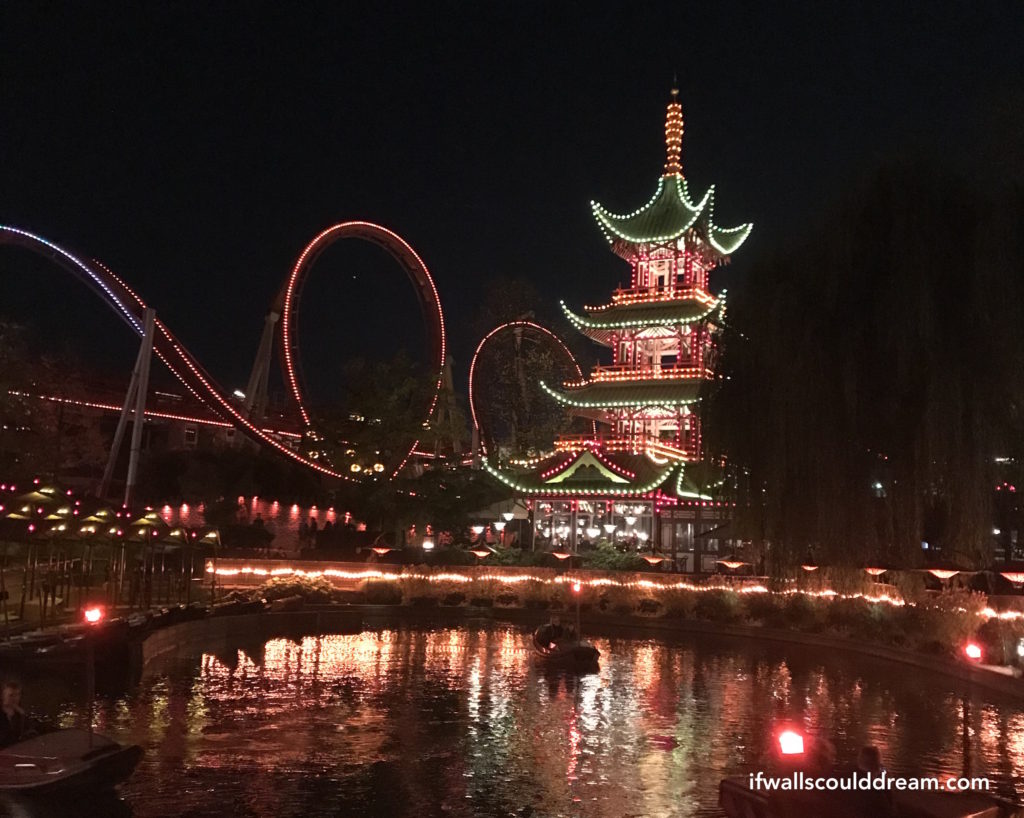
The Lake 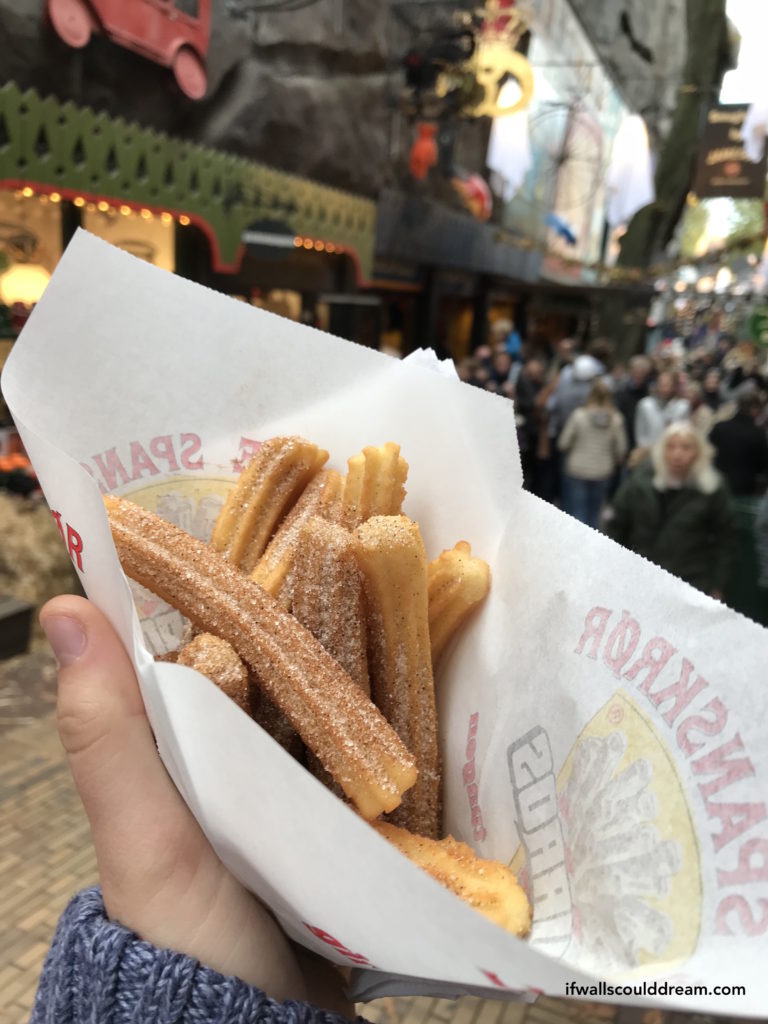
Churros 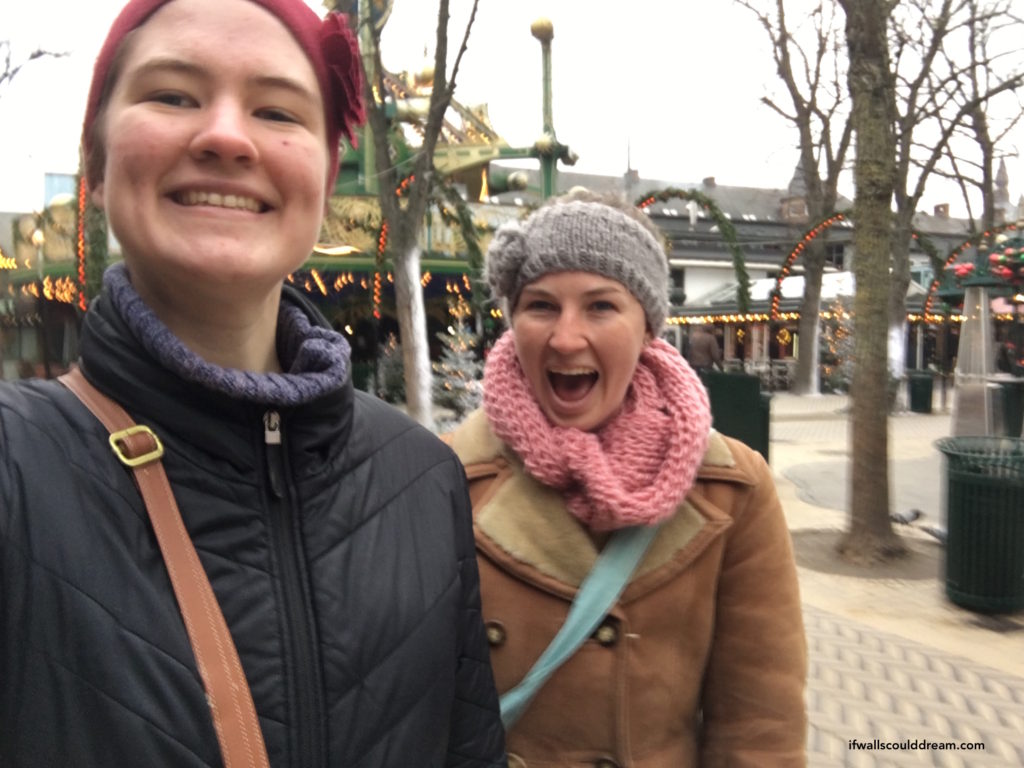
Mattea 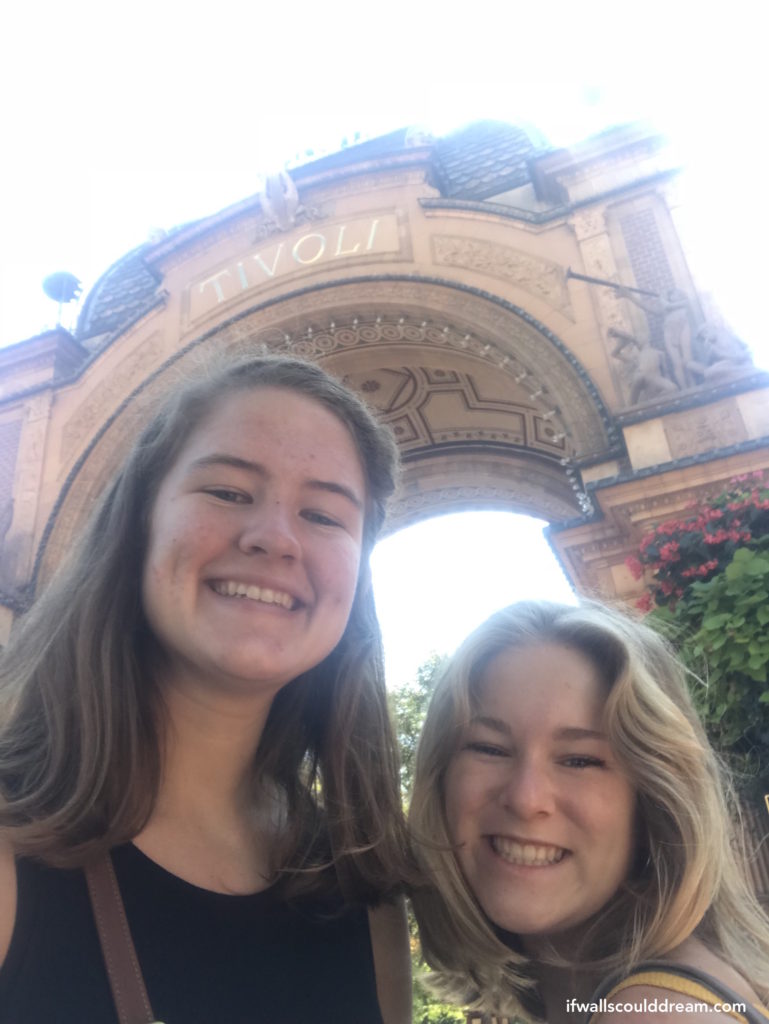
Grace 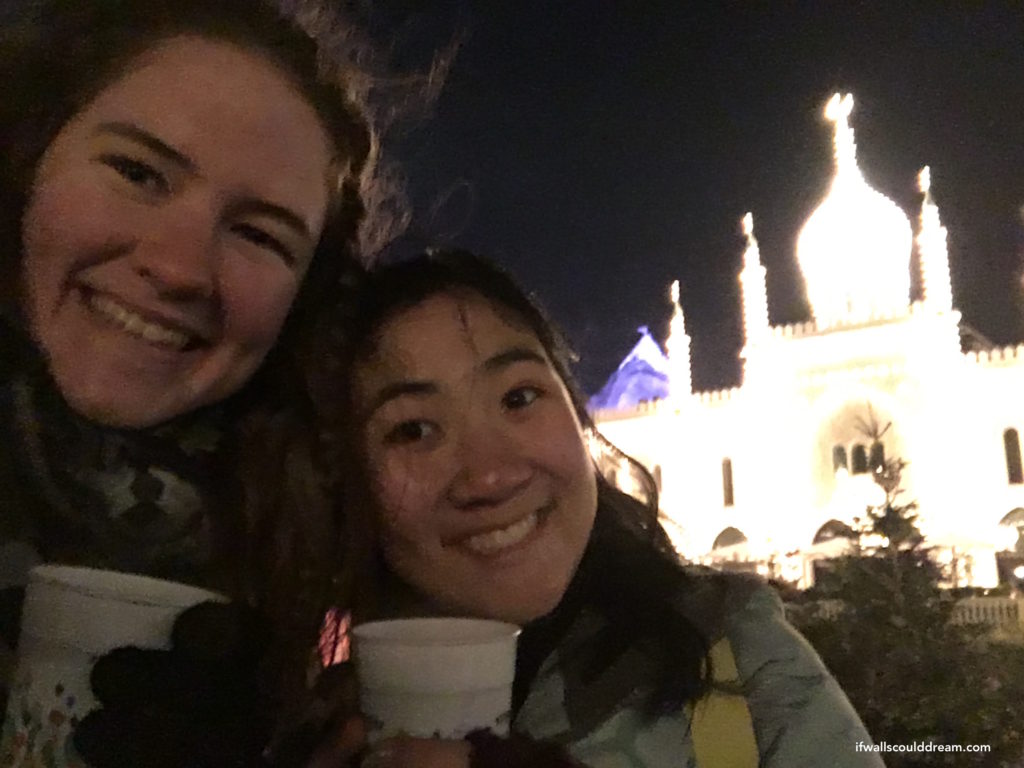
Janet 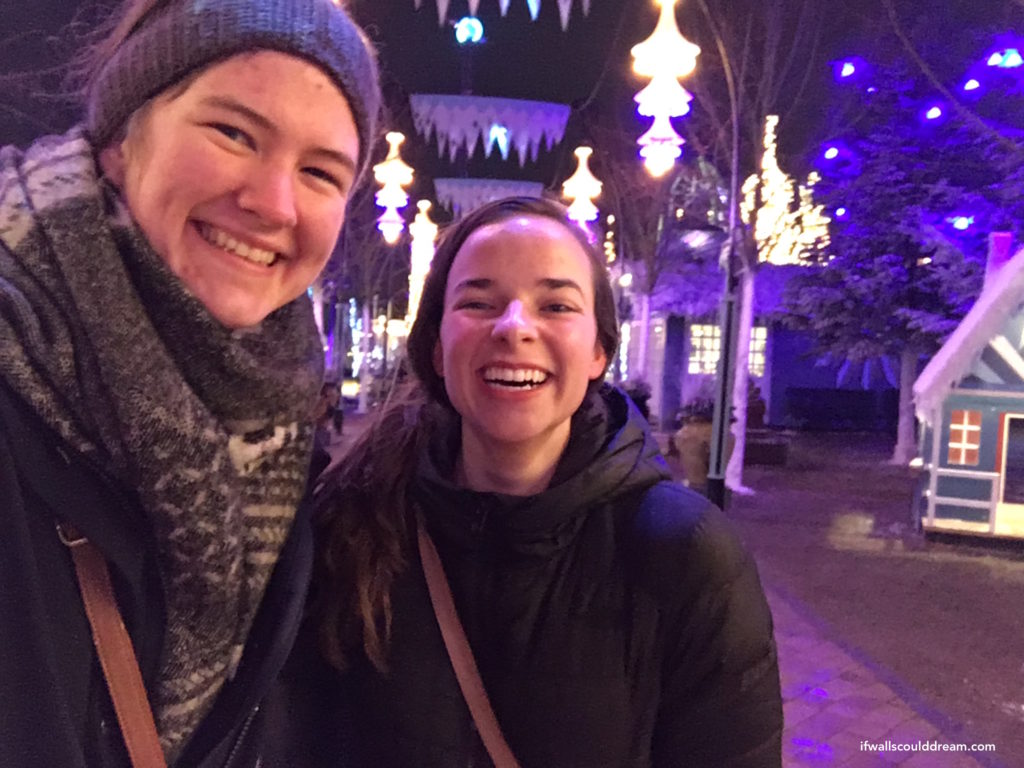
Kara 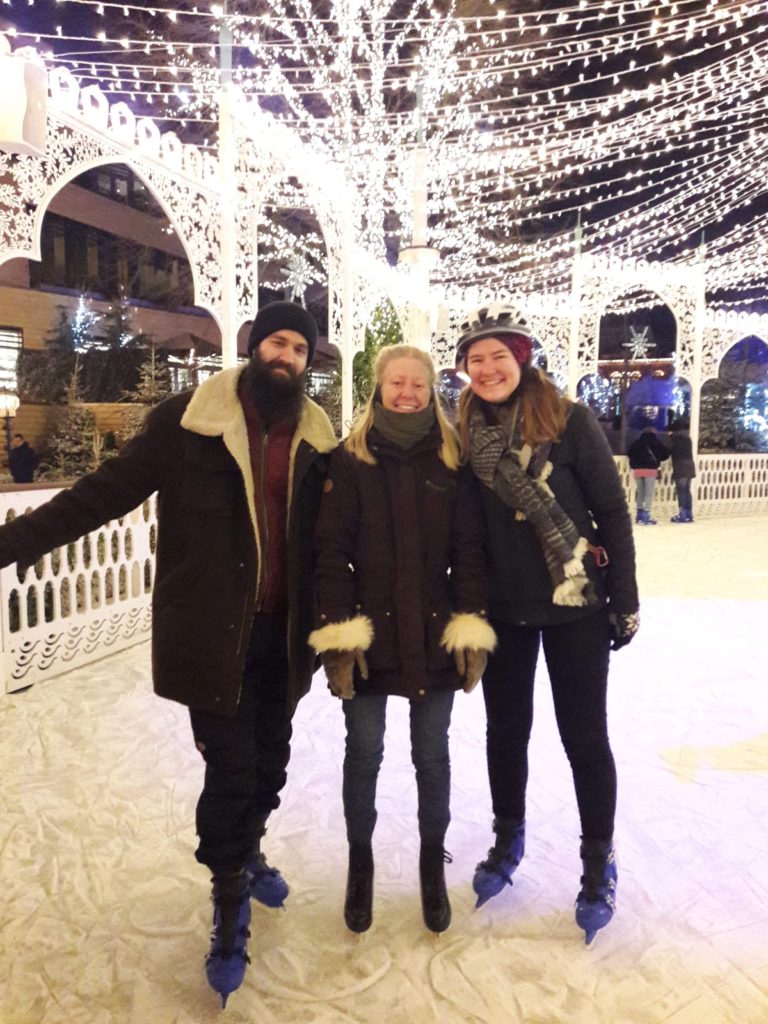
Alex & Olivia
If walls could dream… they’d dream of visiting Tivoli!
Homestay vs. Rented Room
Are you a DIS Copenhagen student trying to decide which housing option is right for you? I decided to live in a homestay my first semester and a rented room my second semester and it was the perfect mix of getting to know Danish culture and getting to experience the city.
Homestay Pros:
- You could get a host cat! My host family had a cat named Walter and he reminded me of my cat back home and made Denmark feel like home right away.
- Home-cooked meals! My host family was amazing at cooking and I loved talking with them over dinner about their day. I even cooked some of my favorite recipes from home for them.
- A Danish family! This one might be obvious, but living in a homestay, you’ll get to be adopted into a Danish family. I had three host sisters and it was so fun to get to know them. I also loved getting to know my host grandparents and practicing my Danish with them.
- Danish traditions! I loved getting to learn about Danish traditions with my host family. We made Christmas stars and sang around the tree. We celebrated a neighbor’s anniversary by going to their house super early in the morning for breakfast. Living in a homestay is really the best way to get immersed in Danish culture.
- Learn Danish! In addition to my Danish class, it was so helpful to have a family of native speakers to help with my homework and pronunciation. In return, I got to help my host sisters with their English homework.
Homestay Cons:
- Longer commute. A lot of the homestays are a little further from the city. The commute can be a nice time to do homework, but it’s definitely the most suburban of the housing options.
- Less independence. It’s kind of like being in high school again. To make the most of the experience, you have to be willing to put the time in to get to know your family. This can be hard when balancing travel and school, but it’s SO worth it.
Rented Room Pros:
- Danish roommate! Get to know a Dane your age. I actually lived with a Dane and another girl from Cal Poly and we all got along super well! We were all vegetarians and we had so much fun swapping recipes.
- Cook for yourself! I loved being able to cook for myself and I had so much fun shopping for groceries in Copenhagen, it’s always an adventure grocery shopping abroad!
- Be more independent! To live in a rented room, you have to be very independent. You don’t have a bunch of other roommates to hang out with like in a Kollegium (dorm) so it can feel lonely before you start making friends in classes and things.
- Live in the city! Definitely one of the biggest pro’s of a rented room is that it’s usually in the city. I was in the Frederiksberg neighborhood and I loved it! I could bike to the park, the lakes, coffee shops, museums, school, and even the zoo!
Rented Room Cons:
- Can feel isolated. I touched on this before that living in a rented room can be lonely, especially at the beginning before you’ve made friends through your classes. Your Danish roommate has their own life and isn’t going to hang out with you all the time so you have to be independent enough to go out and do things with your new friends.
- Cooking for yourself can also be a downside because you don’t get home cooked meals from your host family! But if you still want to get to know a Danish family without living with them, sign up for DIS’s Visiting Host program!
I loved living with a host family and in a rented room. My relationships with my hosts and roommates will last a lifetime and I learned so much about Danish culture and grew so much as a person this year. I wouldn’t have had it any other way!
Transportation in Copenhagen
Zones
Denmark’s transportation system is broken into different zones for pricing. The city center is all in zone 1, so if you’re just visiting you shouldn’t have to worry about it. The airport, however, is in zone 4. Save the zone map in your phone as a handy reference!
S-Train
The s-train is the commuter trains in Copenhagen. They’re great and make living in the suburbs and commuting into the city really easy. And you can bring your bike on for free!
Metro
The metro connects the center of the city and is the easiest way to get to the airport. Some major stops are Norreport, Kongens Nytorv, and Christianshavn. They’re opening a new circle line this summer which I’m bummed I won’t be around to see, but I guess I’ll have to come back and visit!
Bus
Pretty much like any other city in Europe, busses travel all around the city and are fairly reliable (until you’re running late, and then inevitably your bus will be late too).
Bike!
My favorite mode of transportation and arguably the most Danish. See more about biking in Copenhagen here.
Tickets
My university provided transportation passes for us to get from home to class which was so nice, but it’s easy to get tickets. You can get tickets in person from machines or 7-Elevens at the station or from the bus drivers themselves, or on the app DOT Mobilbilletter, or you can get a Rejsekort which is a card you fill with money and check in and out with at the beginning and end of your journey.
The s-train and metro are on the honor system, so you don’t have to scan your ticket or anything to get on. There are ticket checker people every once in a while and they’ll give you a hefty fine if you forget your ticket!
For the busses, just show your ticket or pass to the driver as you get on.
Apps
Rejseplanen is the public transportation journey planner app and its the best way to see the bus/train/metro schedule and it helps you figure out how to get from point A to point B.
DOT Mobilbilletter is helpful for buying tickets or zone extensions.
If walls could dream… they’d dream of zipping all around Copenhagen.
How to Bike Like a Local in Copenhagen
Biking is an integral part of the Danish lifestyle and if you visit Copenhagen, you really should bike around to see the city. It’s also the fastest and easiest way to get around. Here’s a few things you should know to bike like a local (and not get run over!)
Renting a Bike
You can use an app like Donkey Republic or Bycyklen to rent an electric bike but if you want to look like a local, consider renting a bike from a local bike shop. They speak English and you can rent a bike for the day or for a whole year! You can also rent or buy a helmet there to stay safe!
Stopping
It’s obviously important to know how to stop before you start going. There’s two things to remember here:
1. The bike you rent might have different brakes than you are used to. I was used to hand brakes (and I didn’t even know there were other types of bike brakes!) before coming to Copenhagen, but both the bikes I’ve ridden here have backpedal brakes.
2. Signal before you stop by raising your hand. (To really fit in with the Danes, raise it like you’re asking a question in school, but you want to be cool, so you raise it just enough for the teacher to see you but not so much that the other kids think you’re a nerd. Around shoulder height will do.)
Making a Right Turn
Right turns are super easy! Just signal with your right hand, yield to pedestrians, and go!
Making a Left Turn
Left turns are a little trickier. You have two options:
1. If the light is green: cross the street, signal that you’re stopping by raising your hand like you’re asking a question and stop at the opposite corner. Pivot your bike to the left and wait for the light to switch, then proceed.
2. If the light is red: you can be sneaky and hop off your bike, walk it across the crosswalk to your left and then wait for the light to switch and walk it across the crosswalk again and then jump on and go.
Where’s the Bike Lane?!
Usually the bike lane is between the car lane and the sidewalk which makes sense and it usually has bikes painted on it. However, it can get a little tricky out in the suburbs because sometimes both directions of bike lane are on one side of the road, it’s like a mini bike road next to the car road. Anyways, it’s really not that hard to figure out, just a fun little quirk I wanted to point out. Also, the smaller streets don’t have designated bike lanes and it feels so strange after biking in bike lanes for so long to bike just in the street!
Bringing Your Bike on the Train
It’s super nice that it’s free to bring your bike on the s-train. (For the metro you can buy a cheap bike ticket on your phone and bring it on during non-rush hour times. I don’t think you can bring your bike on the bus but I’ve never tried it.) On the s-train there’s a special car with bike racks, just wait at the station by the bike painted on the ground (or by the handicap dots) because that’s where the bike car will be when the train stops. On longer trains, there are specific bike entry and exit doors to ease traffic flow.
Locking Your Bike
One last note about bikes in Copenhagen, they usually just have a lock on the back wheel. Danes are so trusting and Copenhagen is so safe that you don’t have to chain your bike to something when you park it, you just lock the back wheel and no one will steal it! That being said, bike theft is the largest crime in Copenhagen and I would advise against leaving your bike in the city center overnight if you can help it and never ever leave it unlocked!
Happy biking!
If walls could dream… they’d dream of biking around Copenhagen.
Unconventional Concert House
The final project I did while studying abroad in Copenhagen was an unconventional concert hall in the Vesterbro neighborhood. In this project, I investigated the “space between” in architecture. How can the space between the inside and outside of a wall or roof be used to experience classical music in an unconventional way?
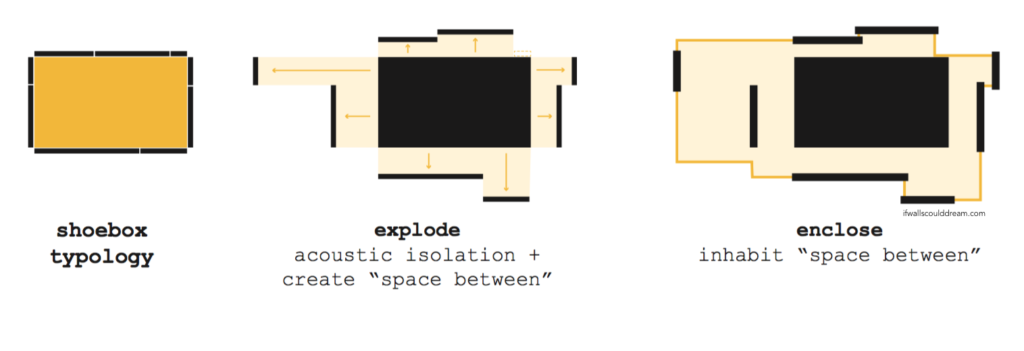
I took a traditional shoebox concert hall typology and exploded it to create space around the concert hall for supporting program. This concert house also uses alternative ways of listening to the music such as standing or lying down to create a more casual mood.
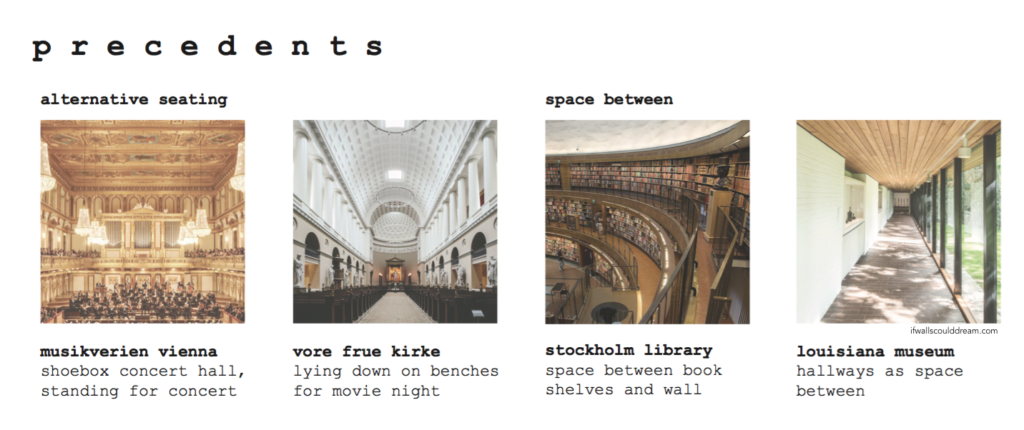
The concert hall is located in an existing park in the Vesterbro neighborhood of Copenhagen, next to a new metro stop, and with a special view of a nearby church steeple.
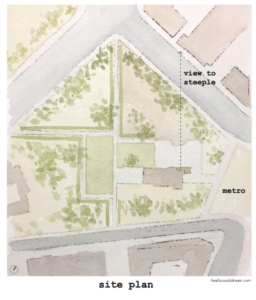
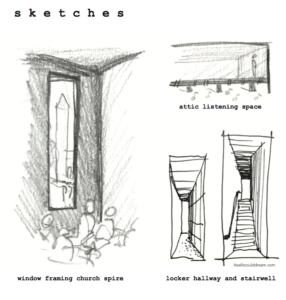
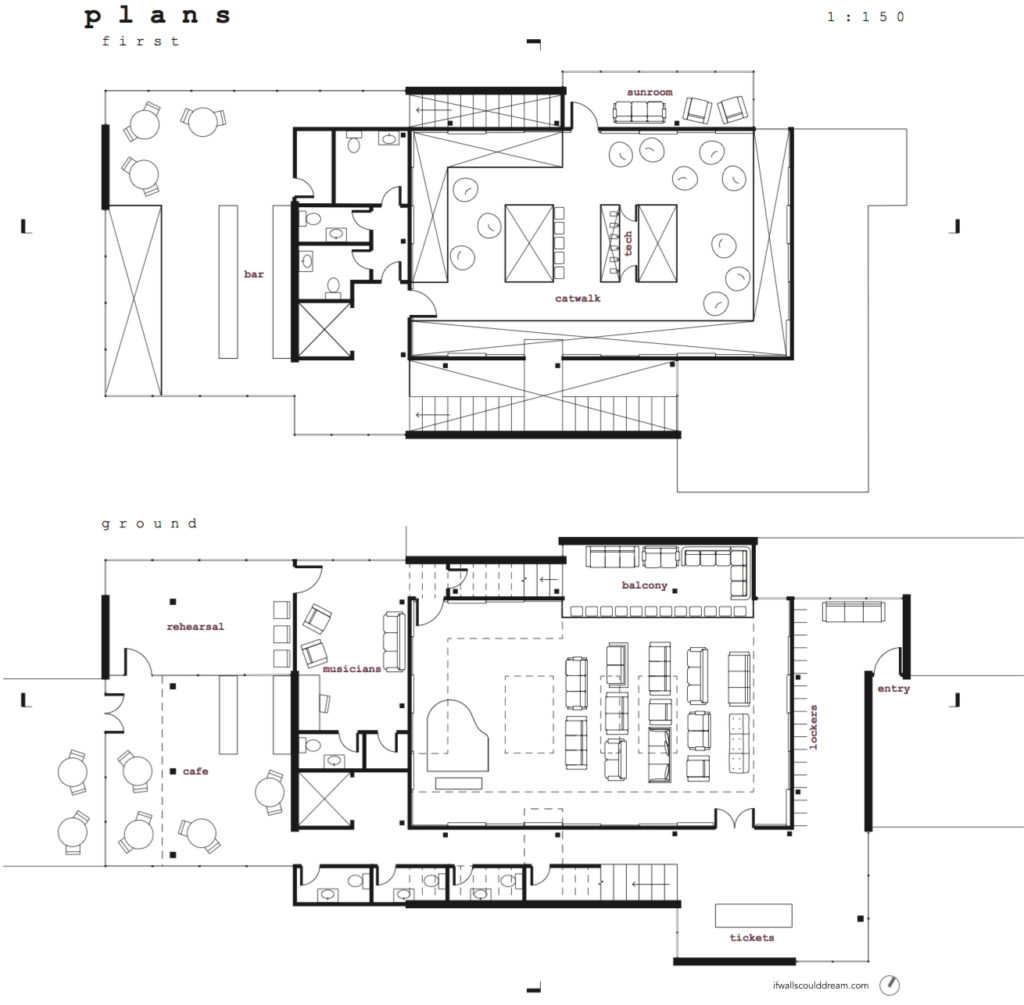
The materials used in the project are mostly wood and ceramic. Wooden acoustic panels line the shoebox concert hall and the wood framing on the opposite side of that wall is exposed. The massive exterior walls that were “exploded” from the concert hall in the original form diagram are made of exposed aerated concrete block (a modern Danish building material similar to CMU but the aeration provides insulative qualities) finished with brick on the outside.
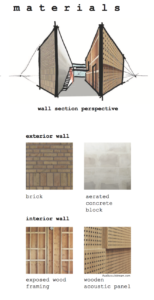
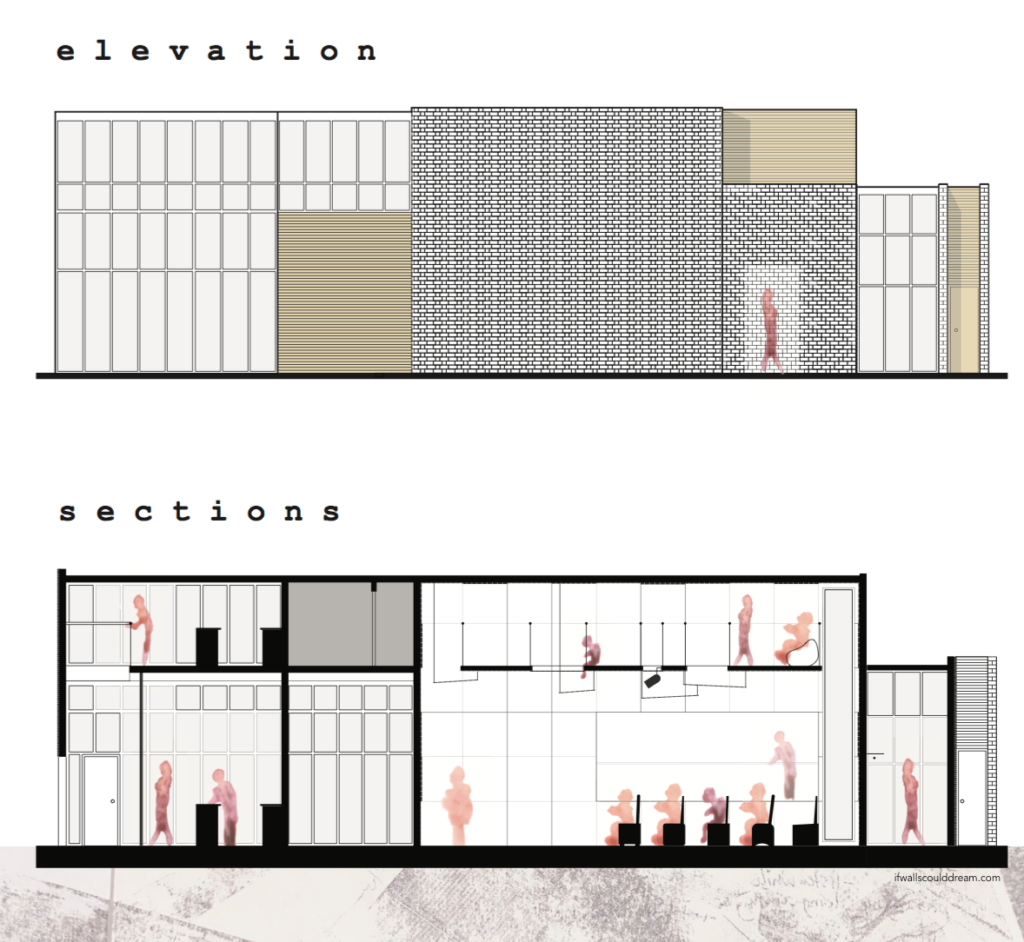
A goal of this project was that as you spent more time in the concert hall, you would discover secret little nooks and new places to listen to the concert. Every time you came to the concert hall you would get a different experience.
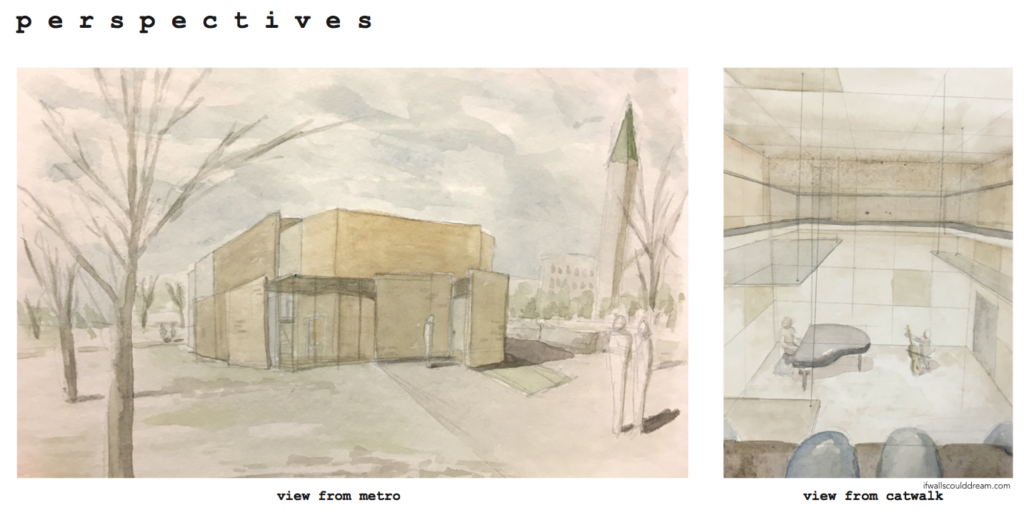
If walls could dream… they’d dream of classical music.
Hier Wohnte…
Here lived…
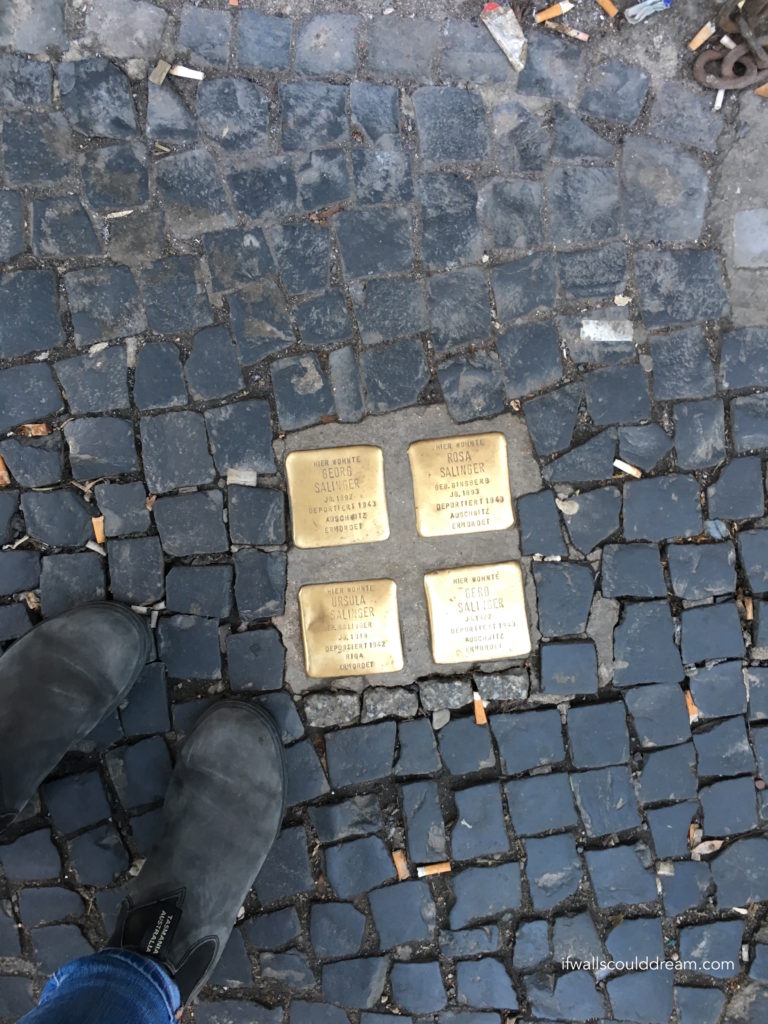
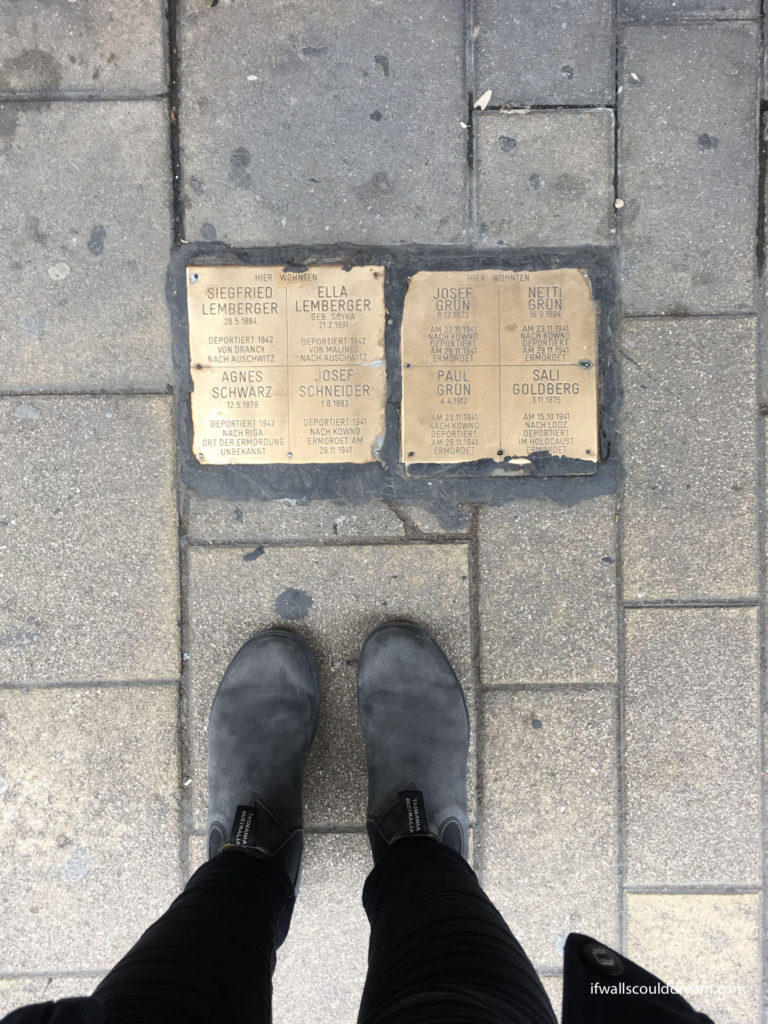
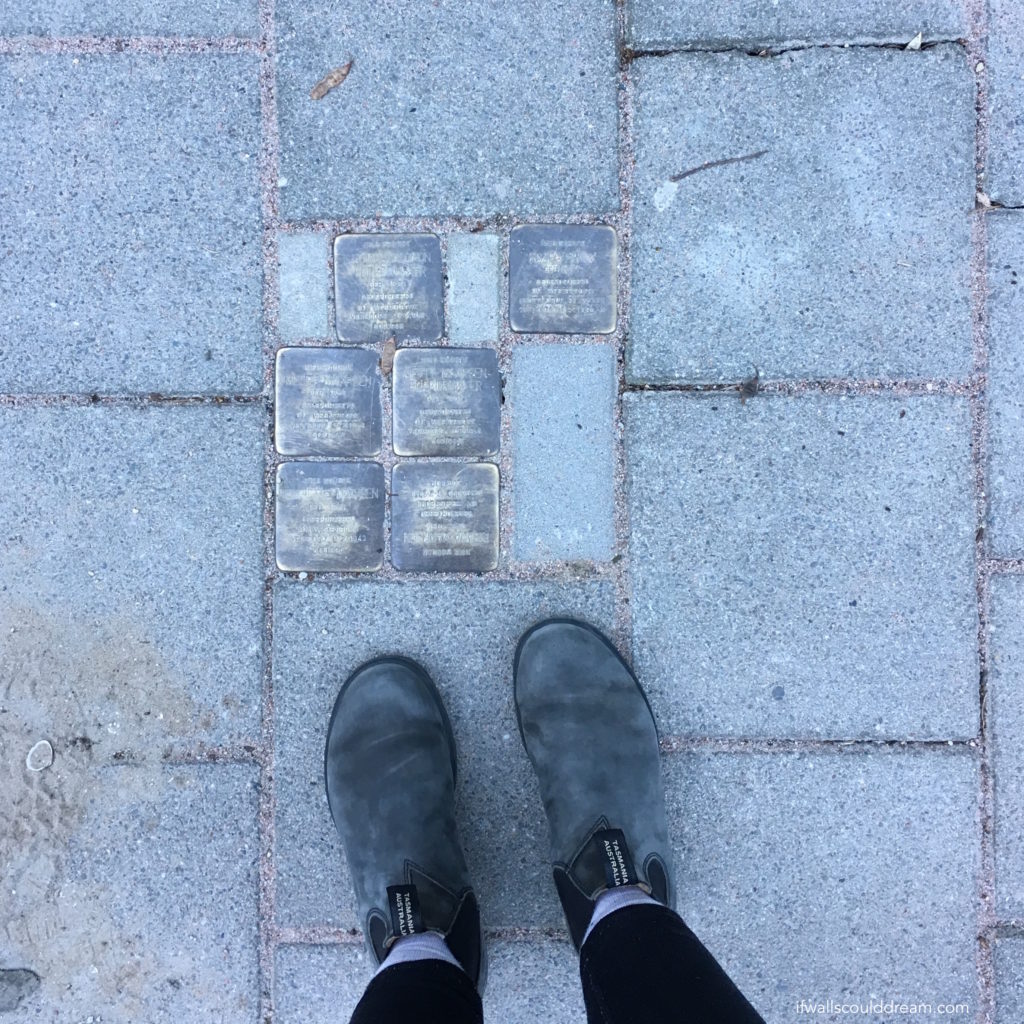
I love this memorial because you see it along your daily route, going to the grocery store or something and you notice it on the ground. It’s subtlety is its beauty and its heartbreak.
If the ground could dream… it would dream of never forgetting.
Vertical Village Cohousing
My first project of spring quarter was to design a cohousing apartment building. Cohousing is a Danish housing concept where residents share common space and community dinners. I named my project “Vertical Village” because it feels like an old-fashioned village where everyone knows their neighbors except instead of the main street going out, it goes up!
We were assigned five residents (a family with two kids, an elderly couple, a music student, an art student, and a single mom with one child) and a list of communal spaces such as kitchen, dining, living, garden, laundry, workshop, game room, etc. and a public cafe. My concept was to wind the communal spaces up through the building along the central staircase and then branch the private apartments off of that.
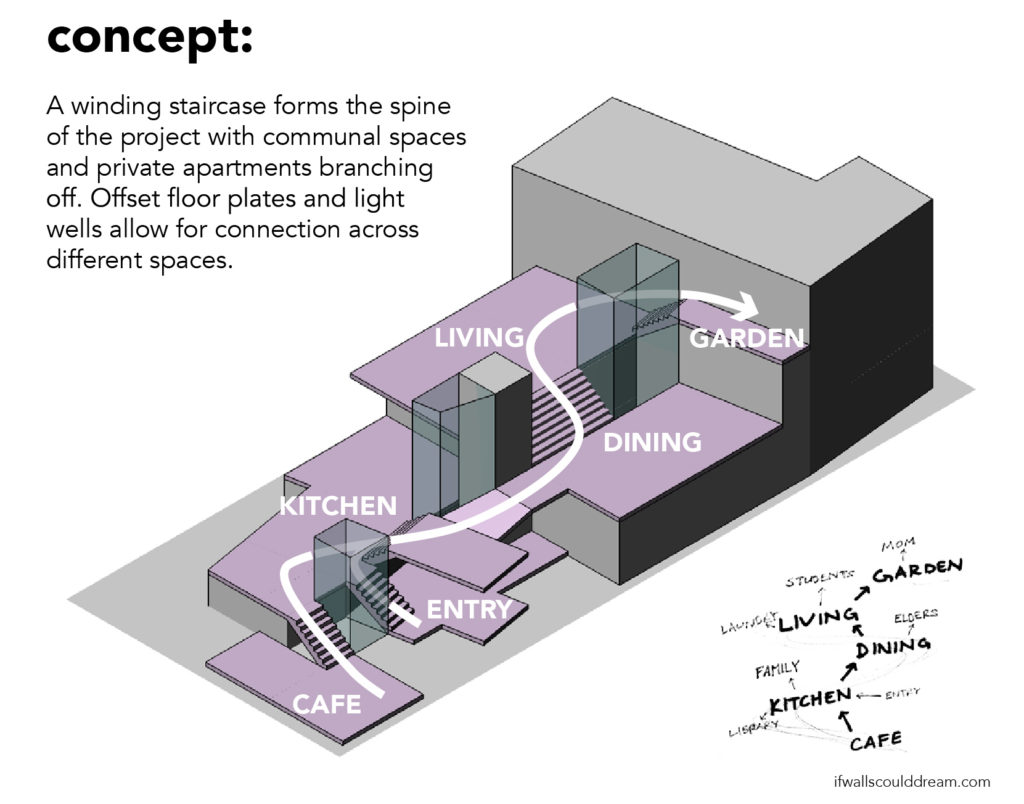
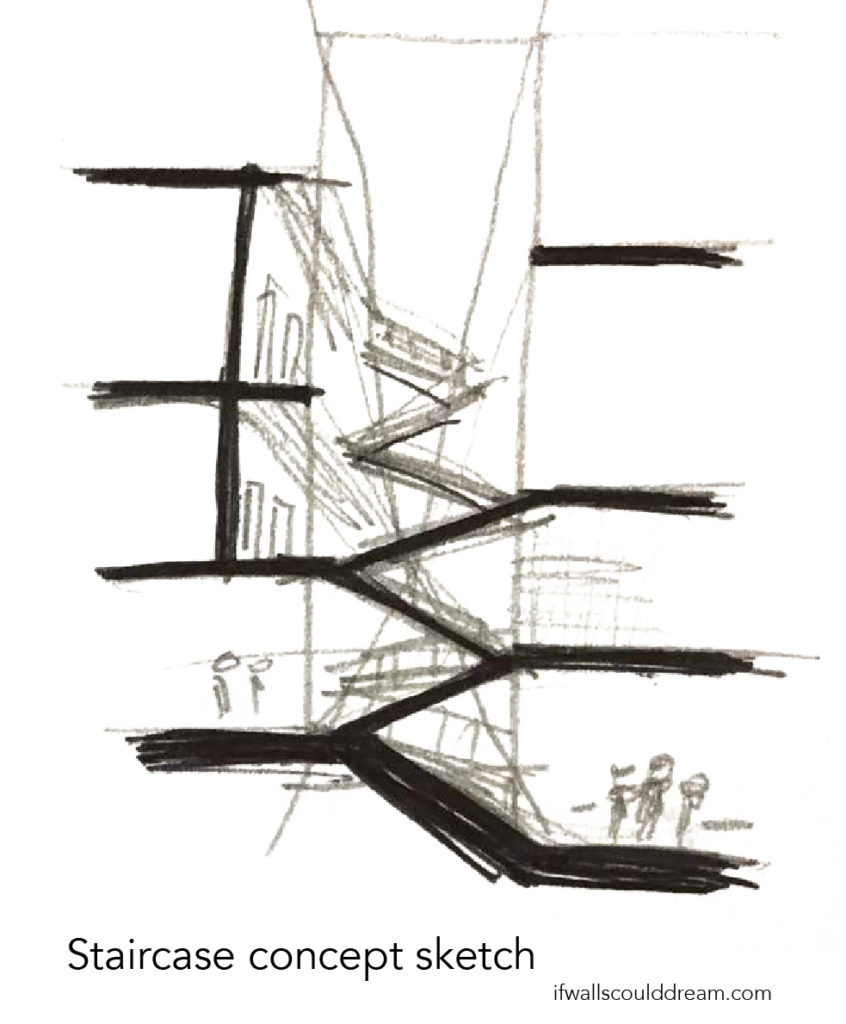
Our site was located north of Copenhagen just past the lakes. I oriented my building to make the most of what little sunlight Copenhagen gets.
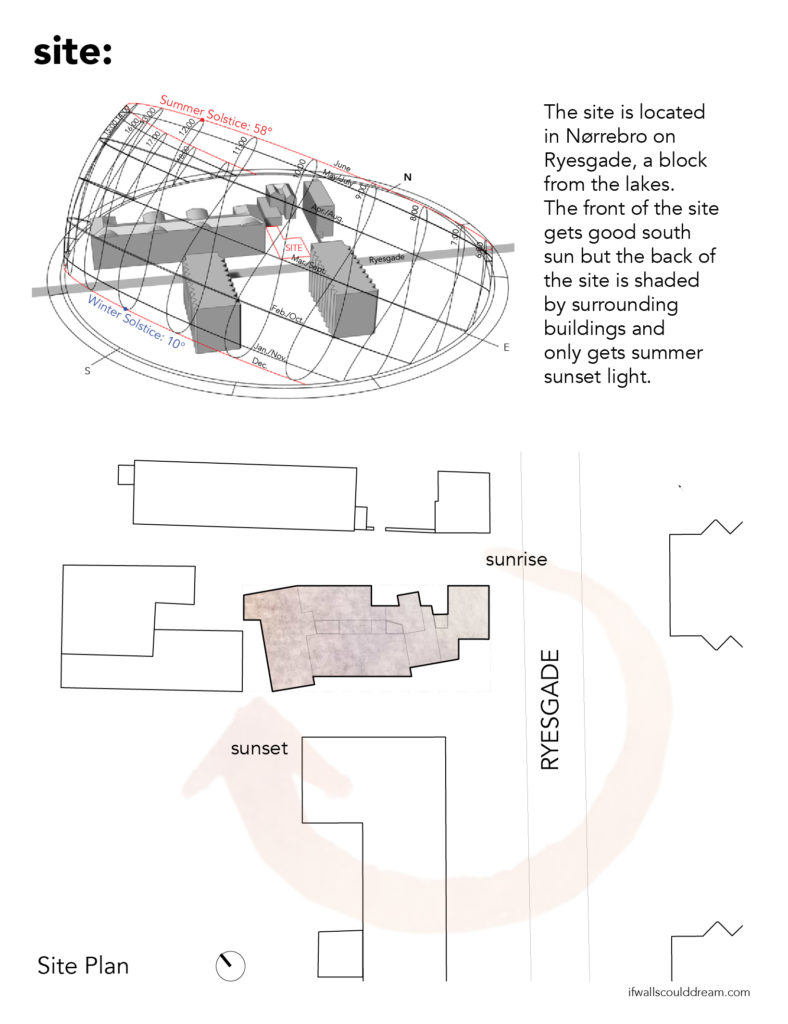
Some watercolors of interior spaces in the building. Three “light wells” bring sunshine to the lower floors and provide views between spaces.
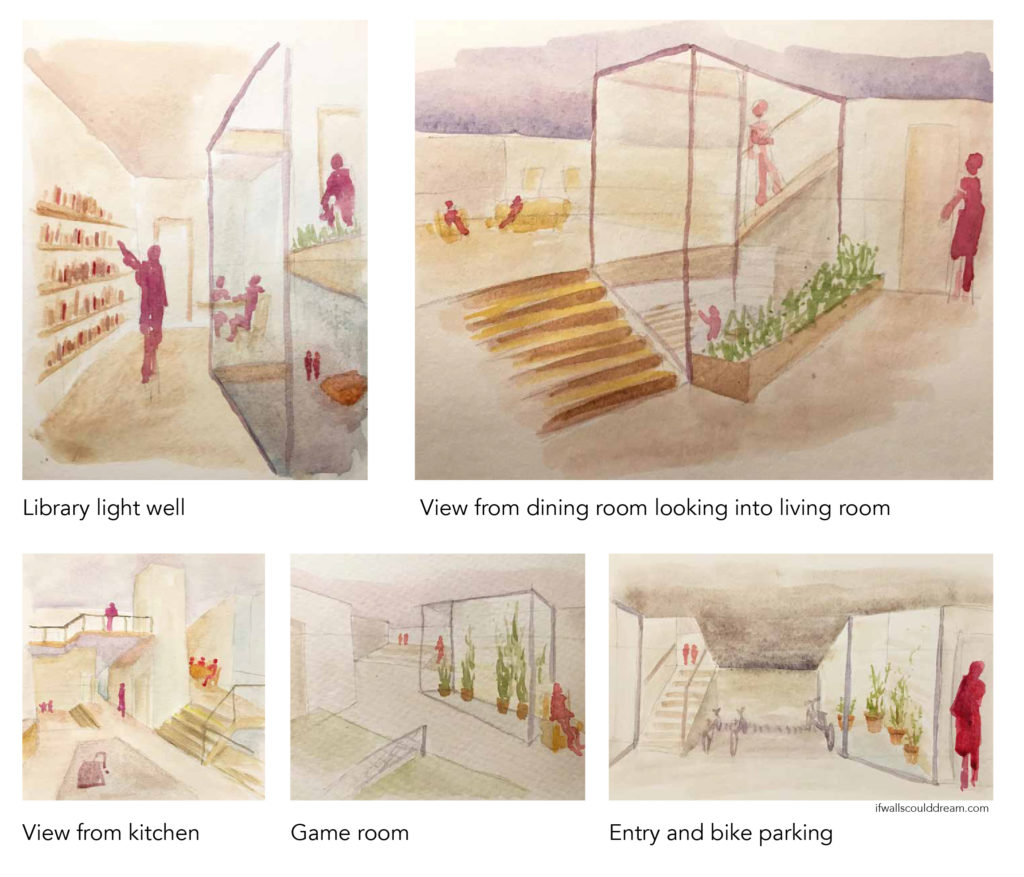
The floorplan is a split level so each side is half a story (1.5 meters) up from the last. This creates easier connections between the levels. For example, the living and dining spaces can be used as two separate spaces or combined during a party into one big space.
The laundry room is off the living room so that you can hang out there while you are waiting for your laundry and there is a play room next to the kitchen where the kids can play. All of the spaces can be converted easily into different uses as the residents change. For example, if the single mom moves out and an artist moves in maybe the play room can be converted into an art studio. In the basement, there is a music room with a stage and a game room.
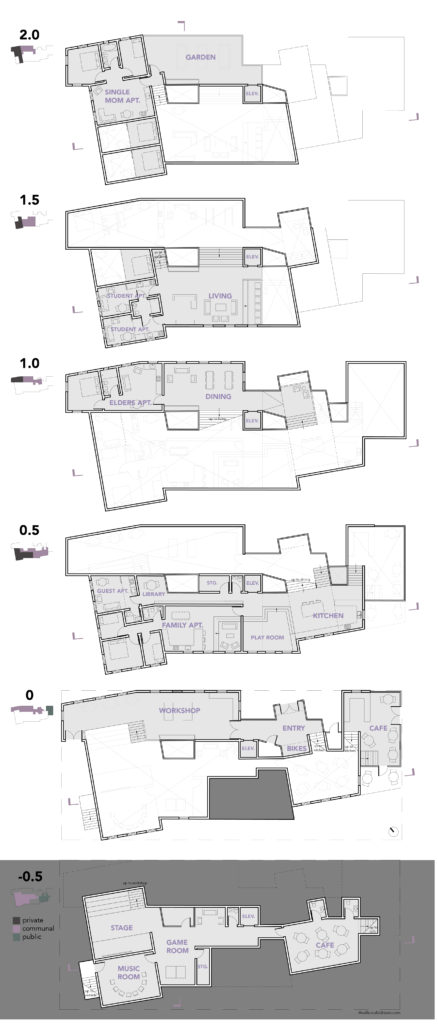
In section, you can see how the spaces are connected between floors and across the light wells so that from the kitchen you can see almost the entire building.

If walls could dream… they’d dream of living in a vertical village.
